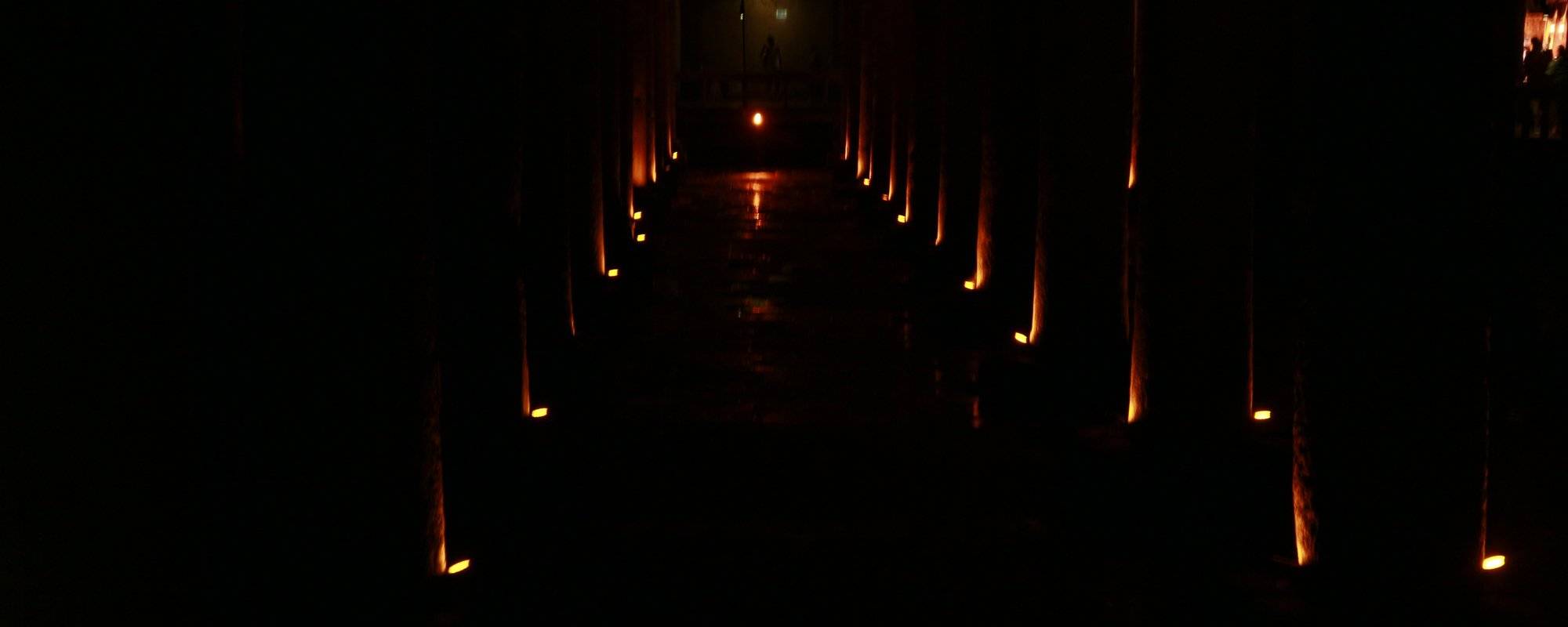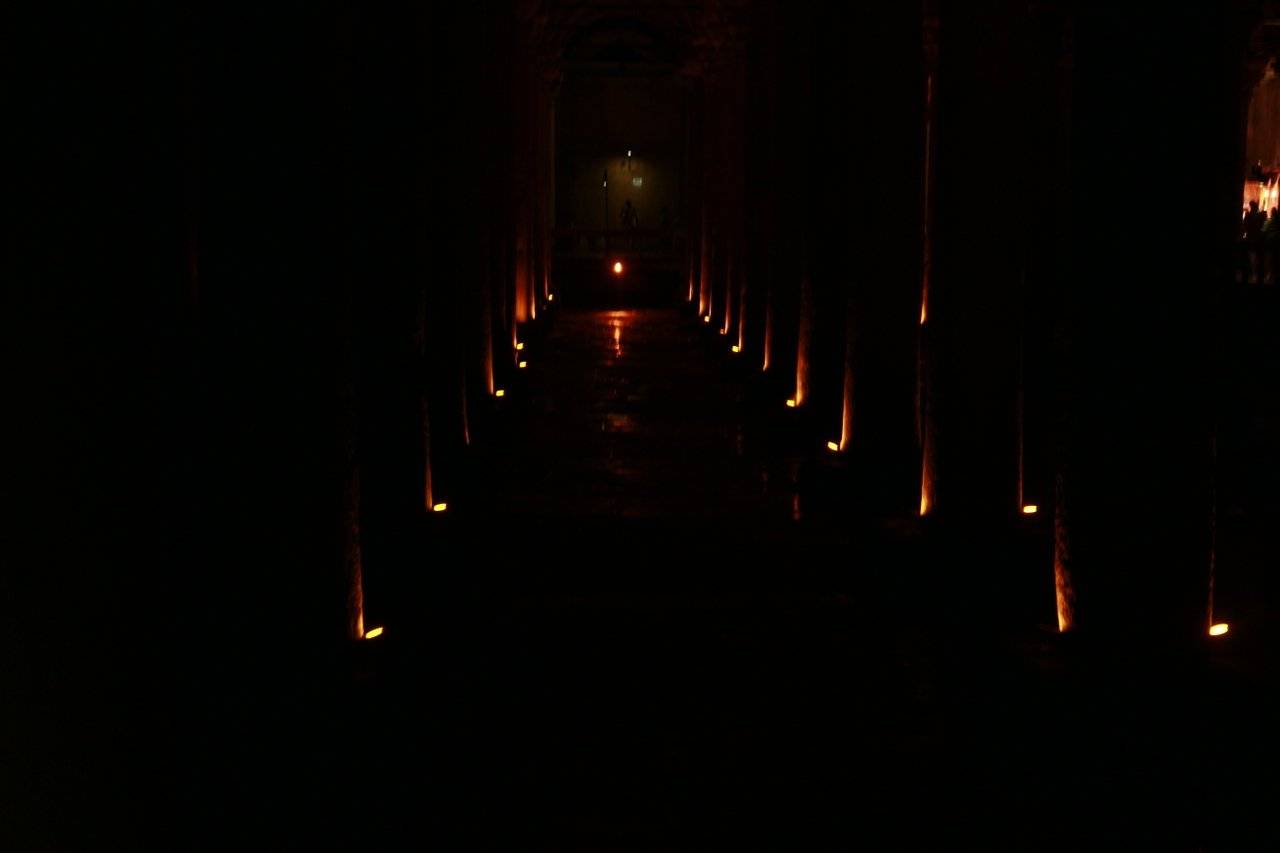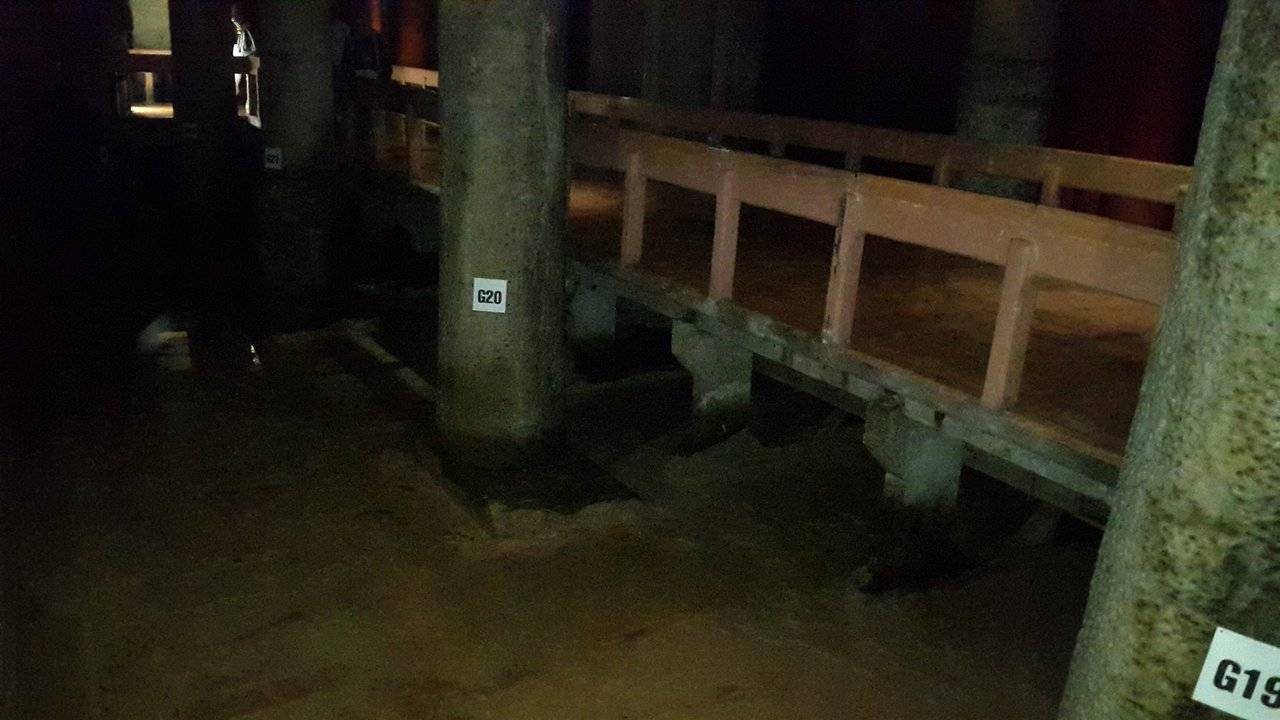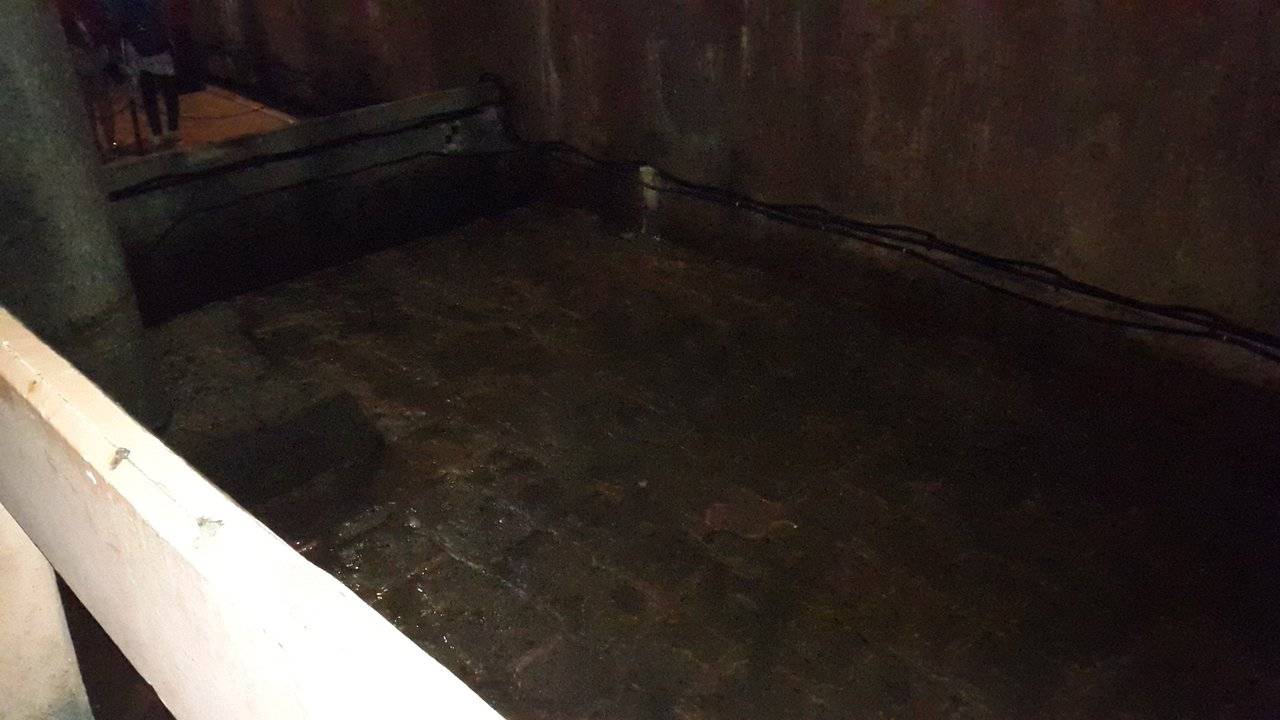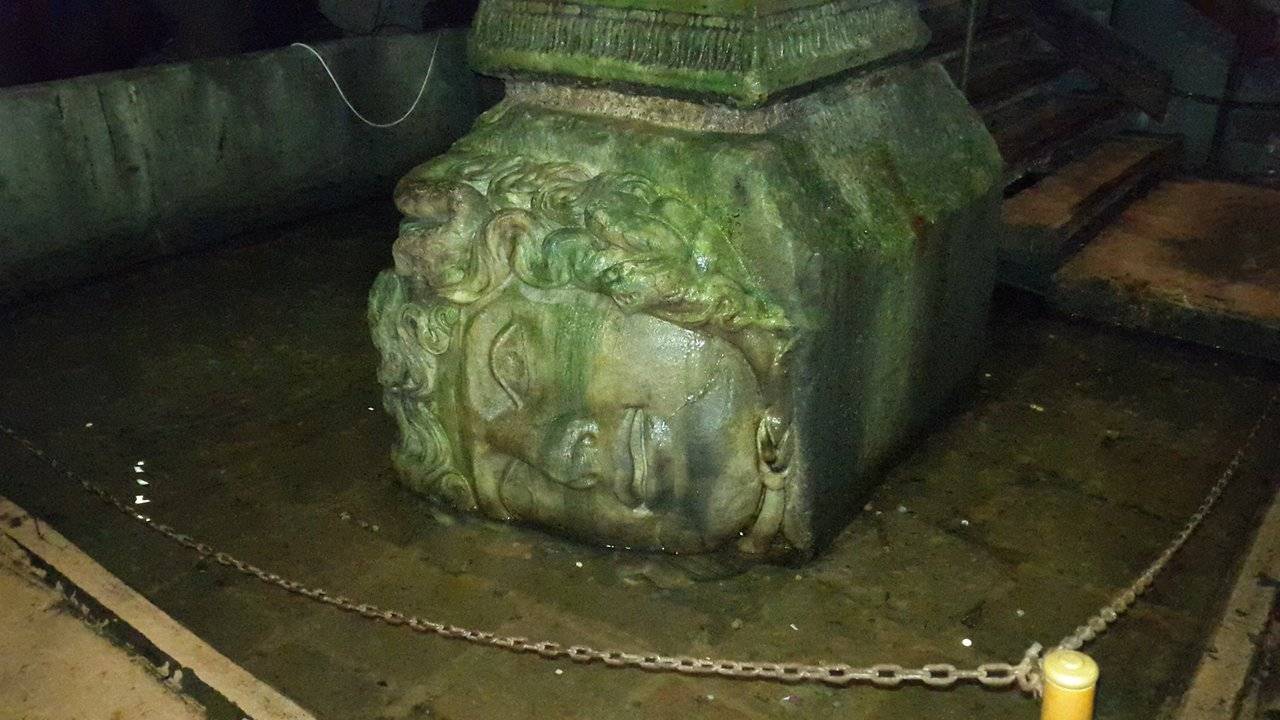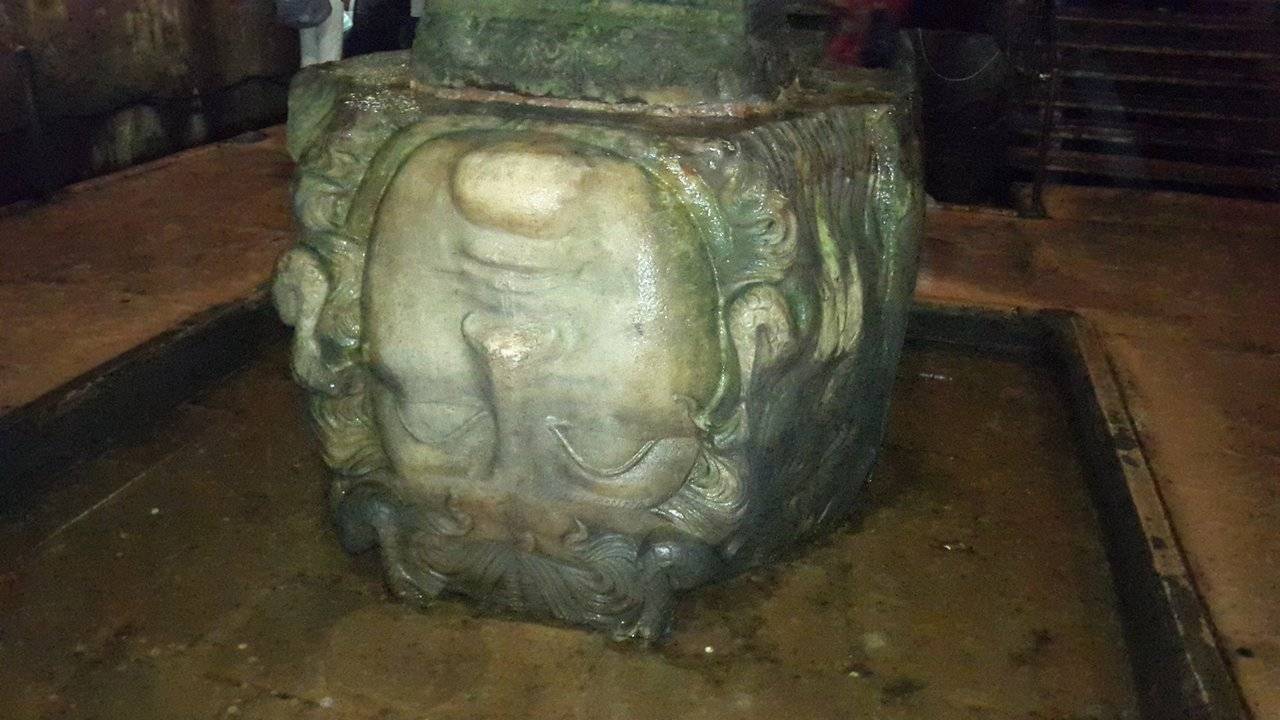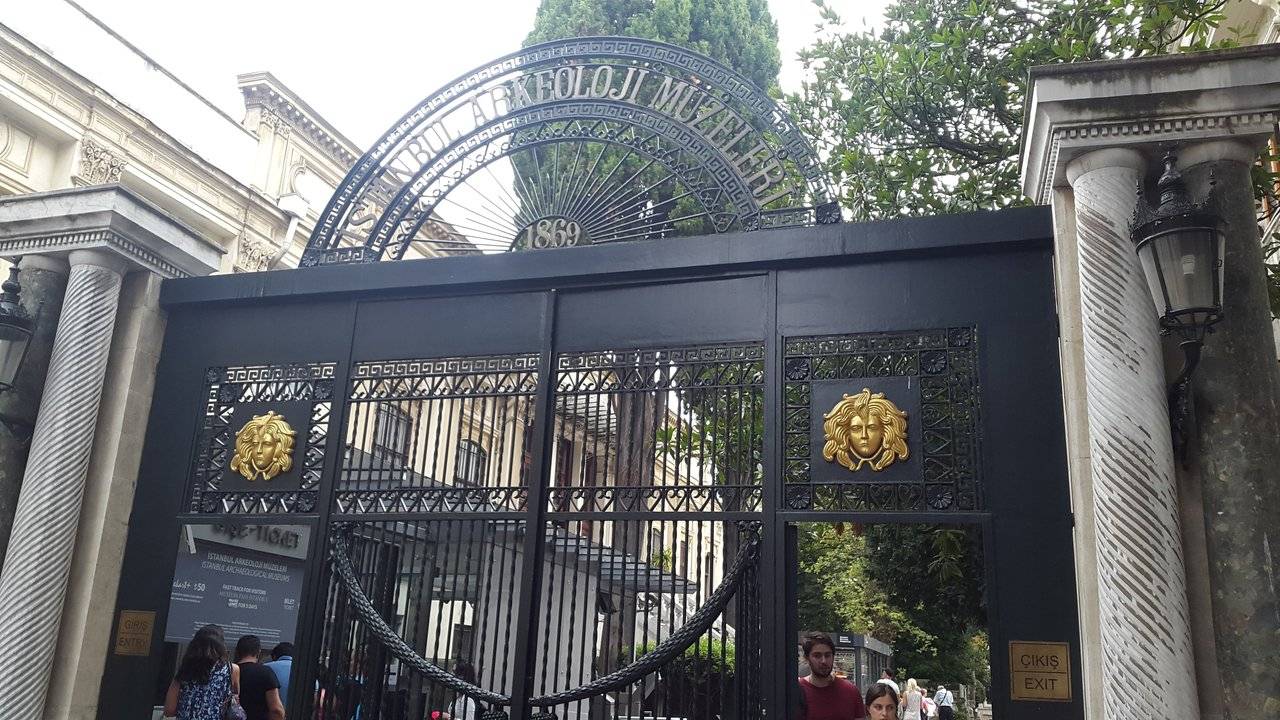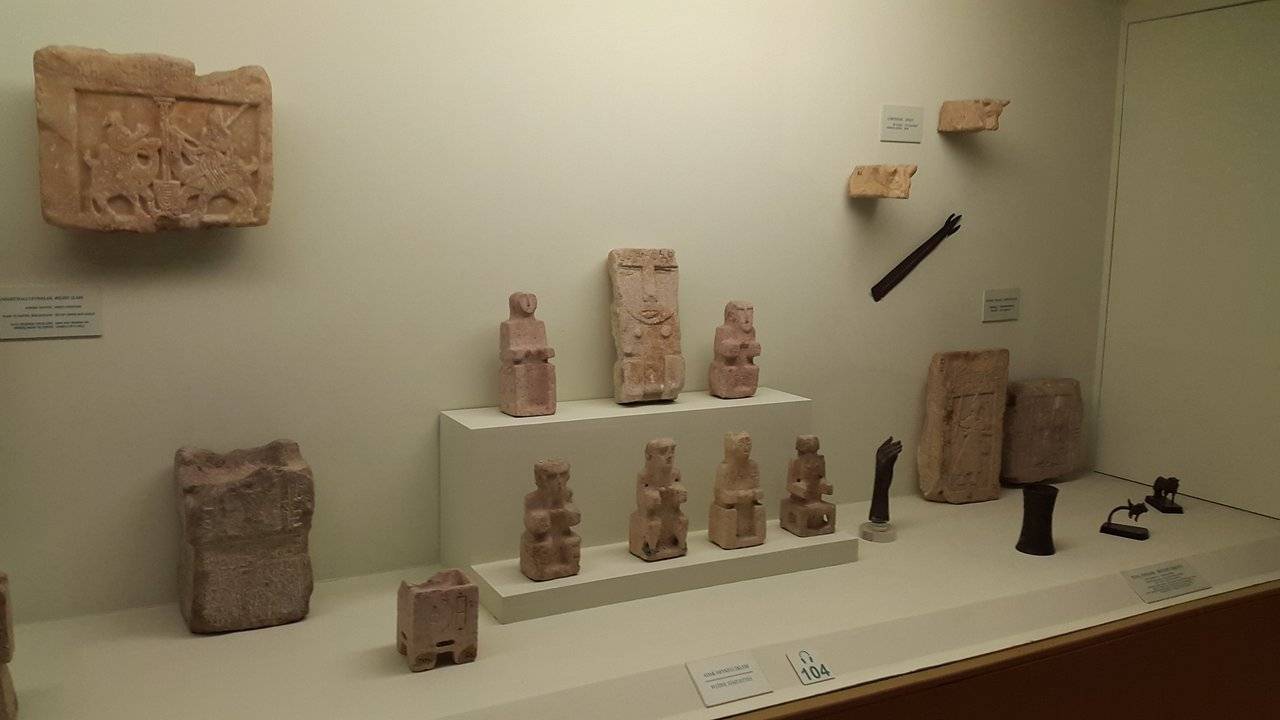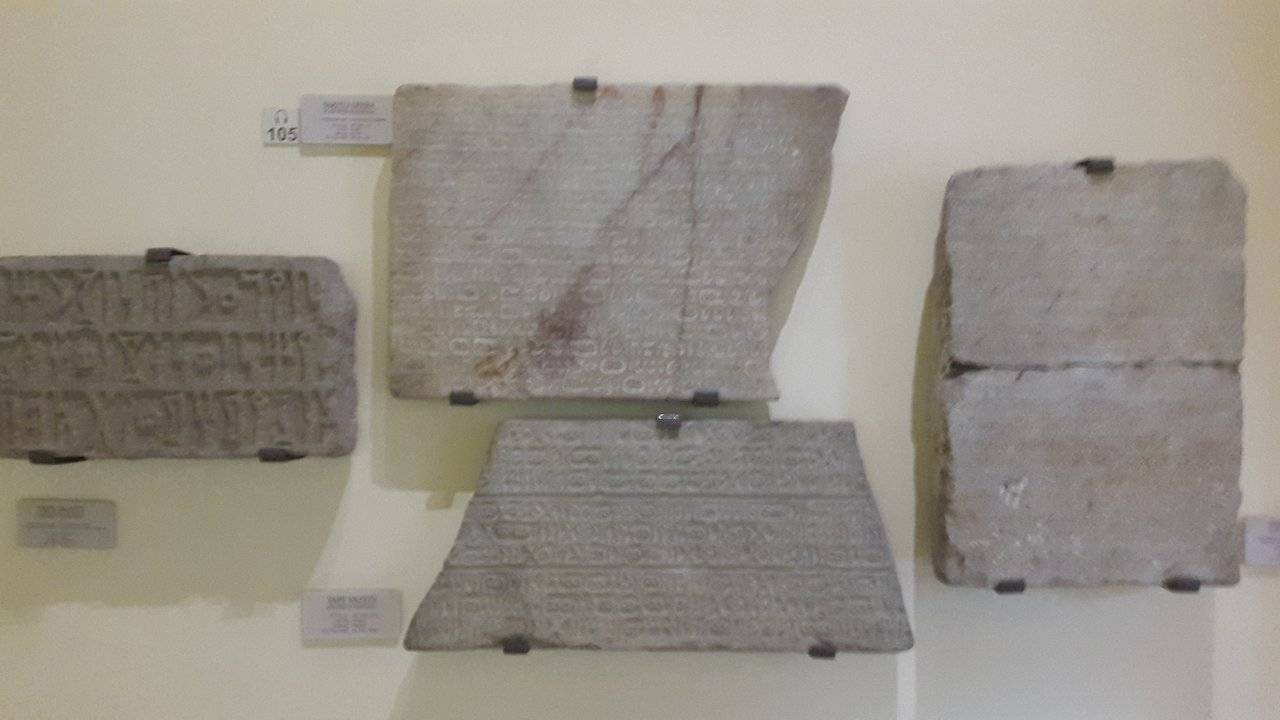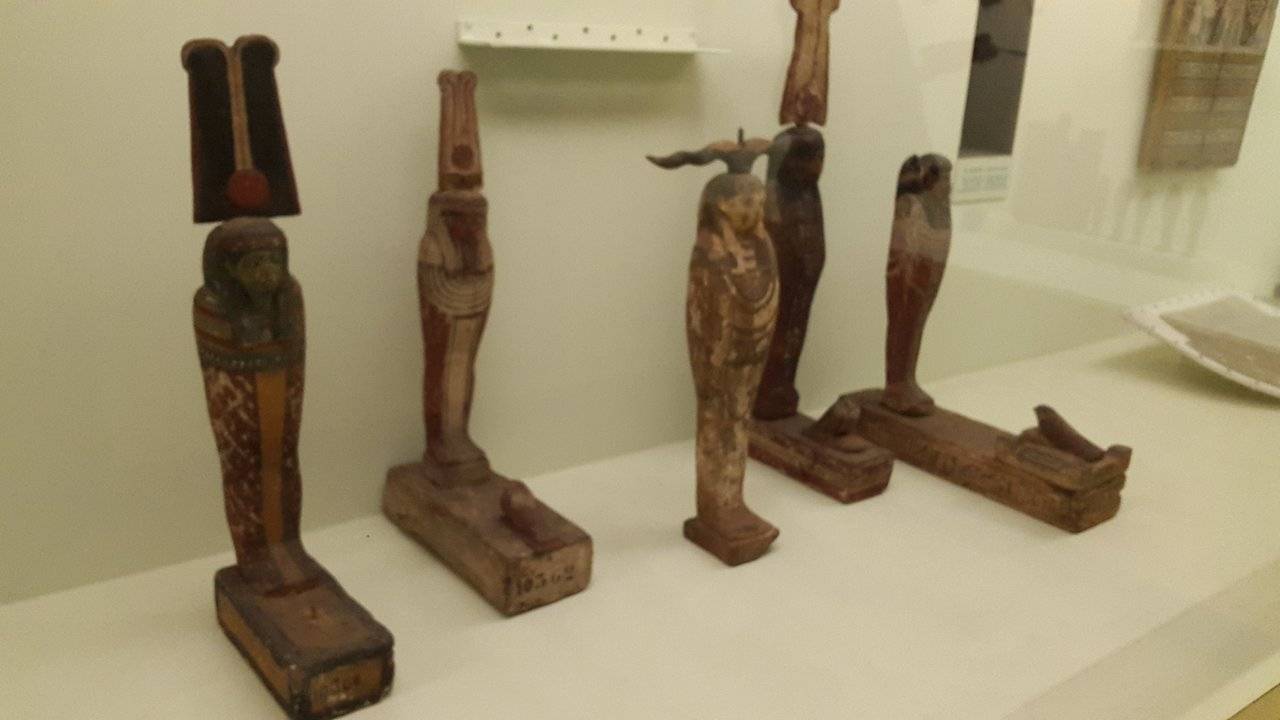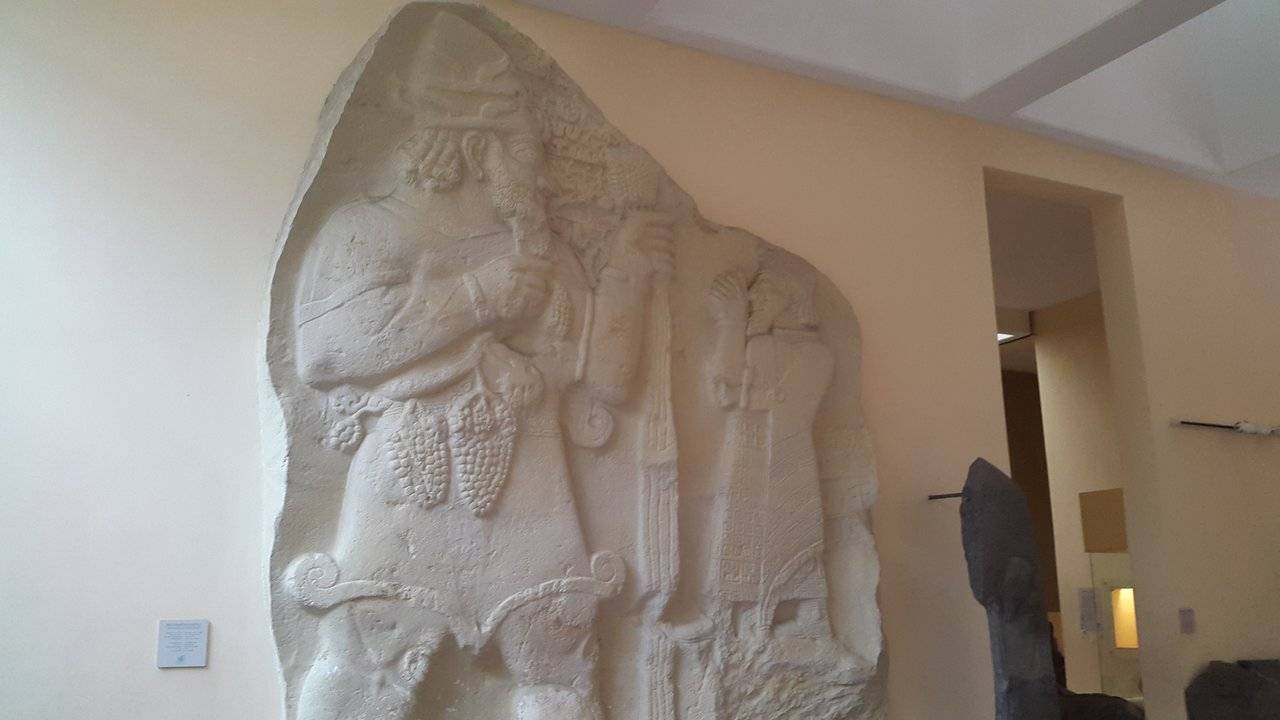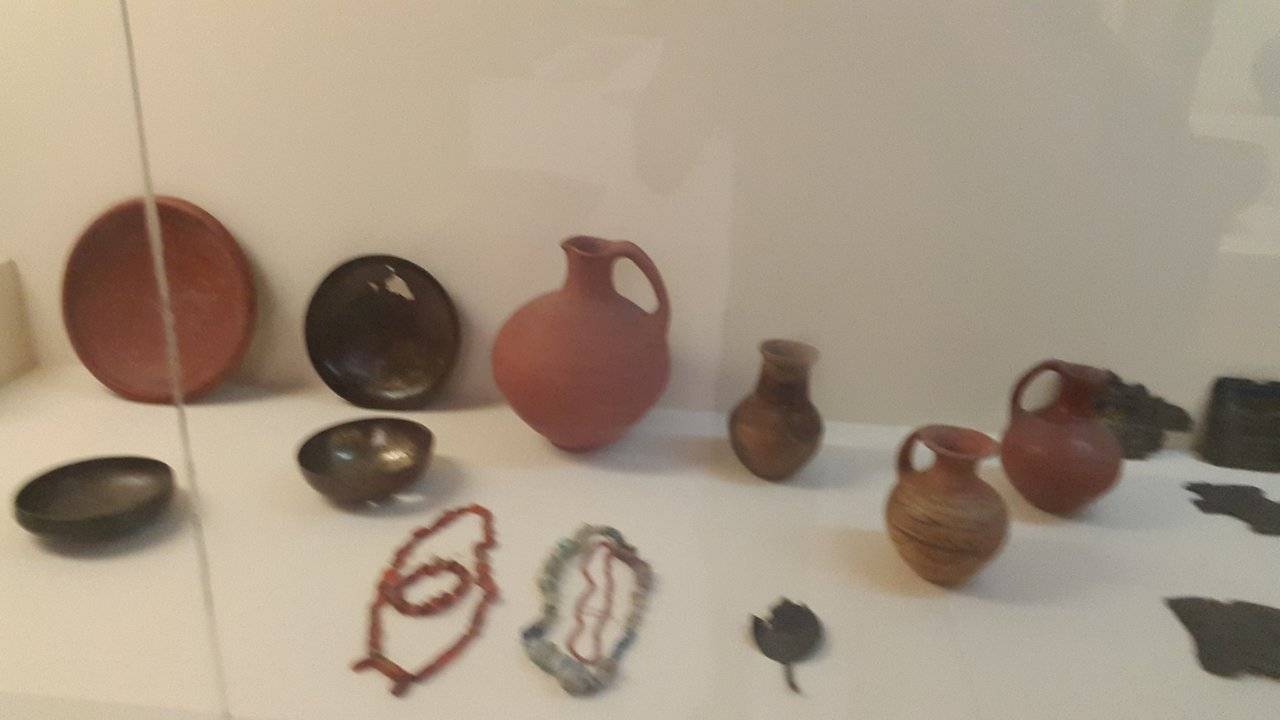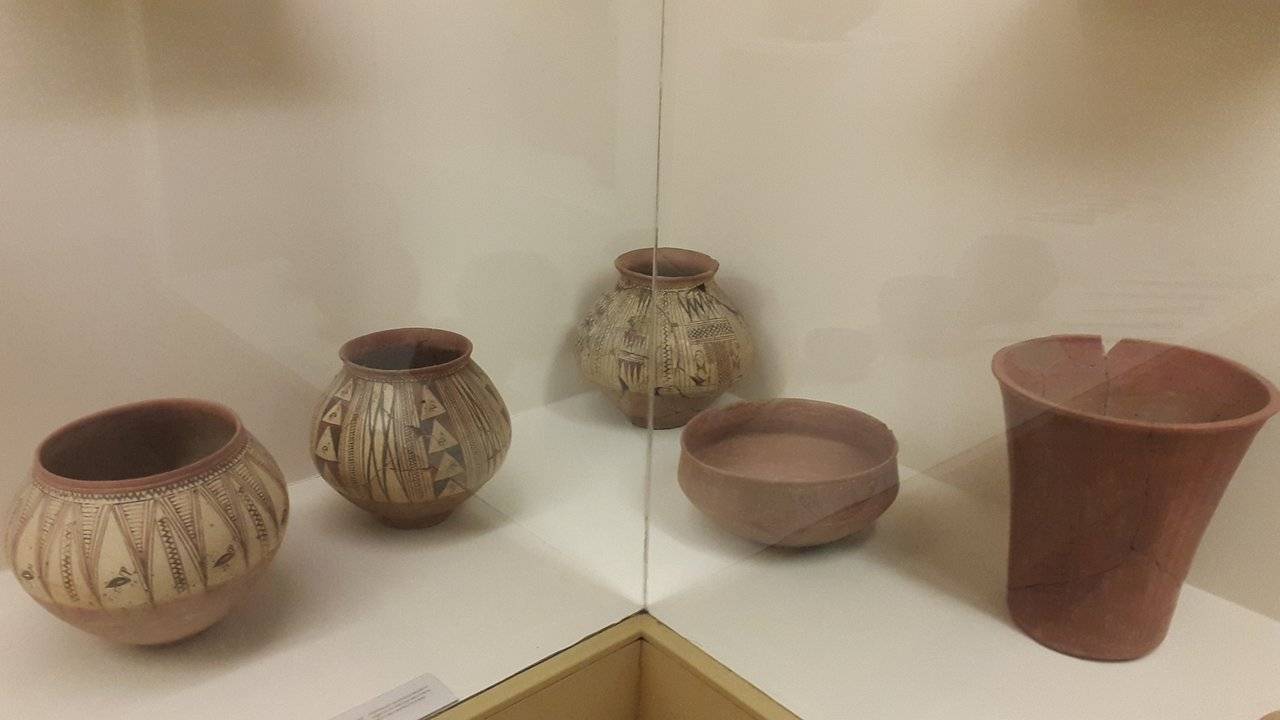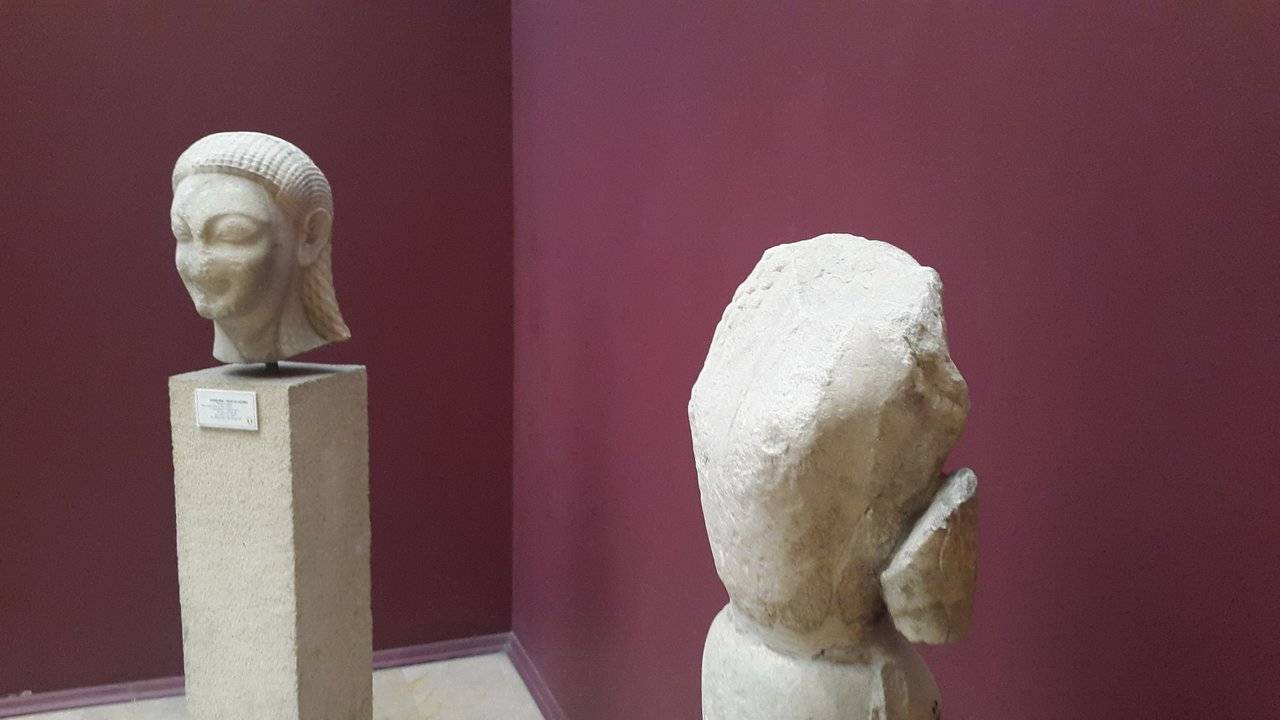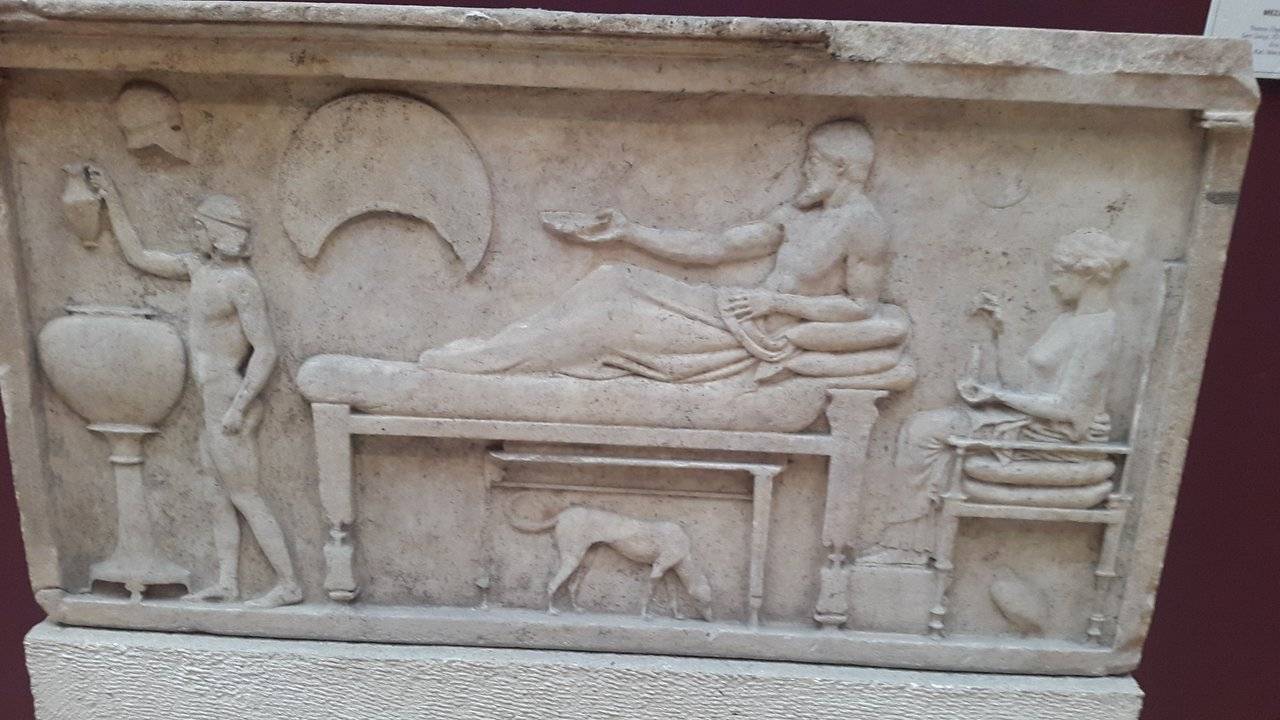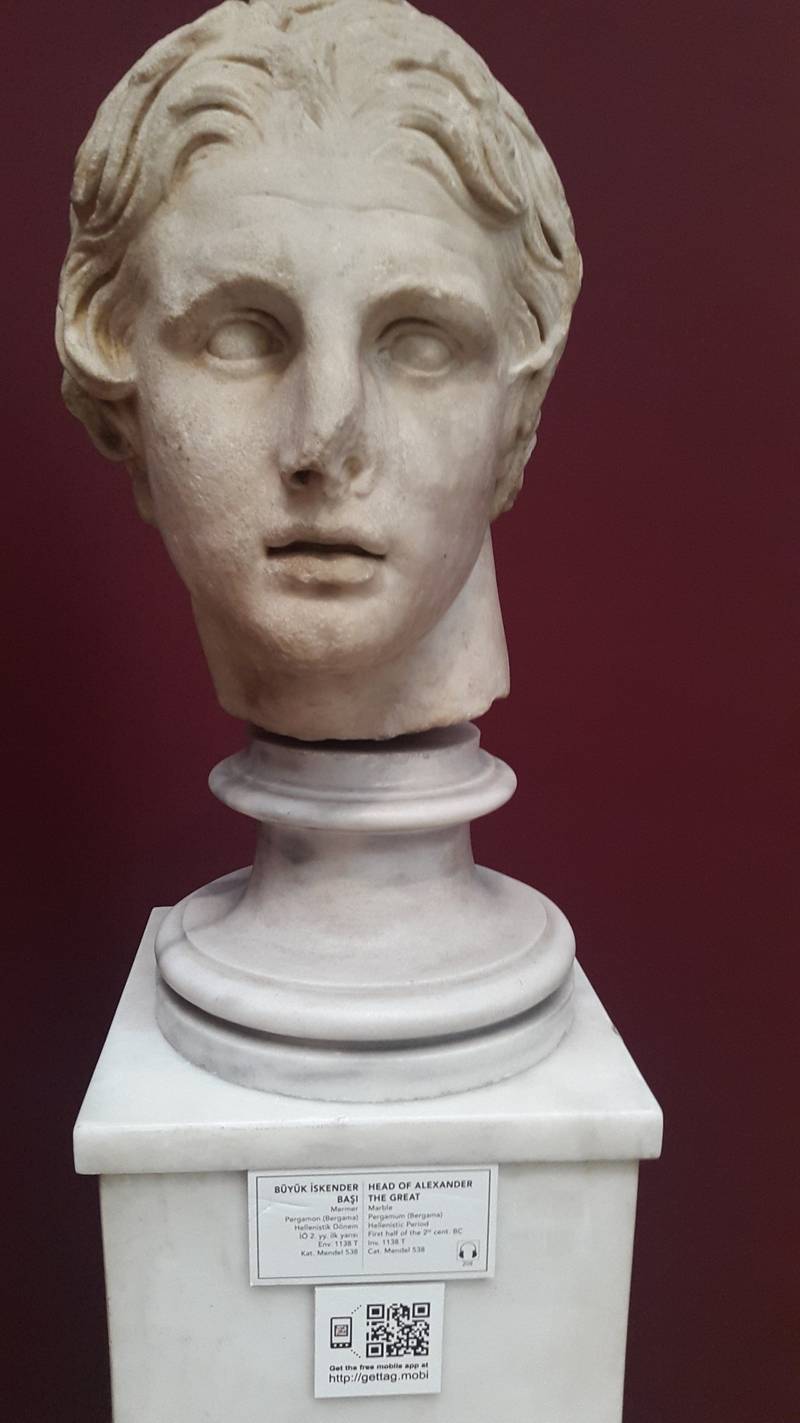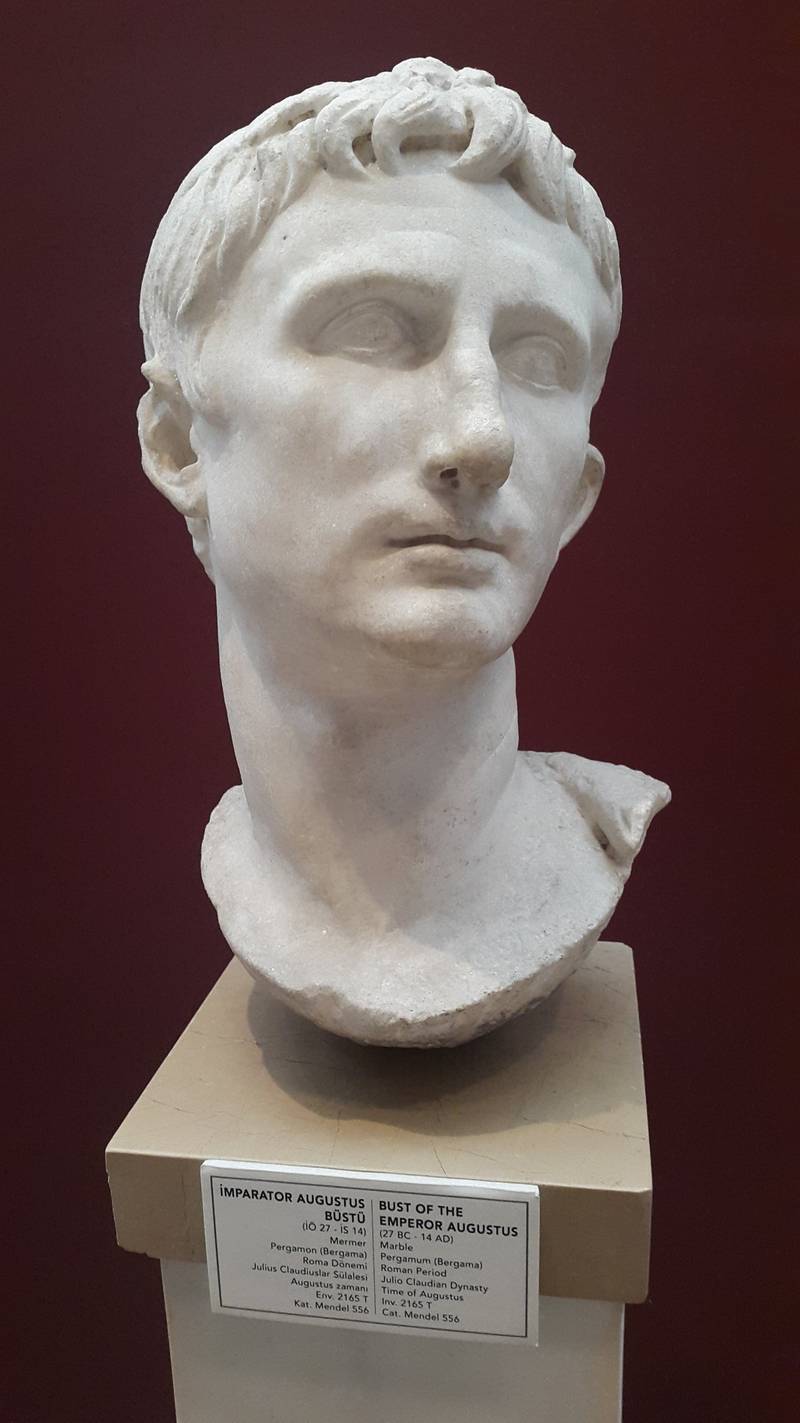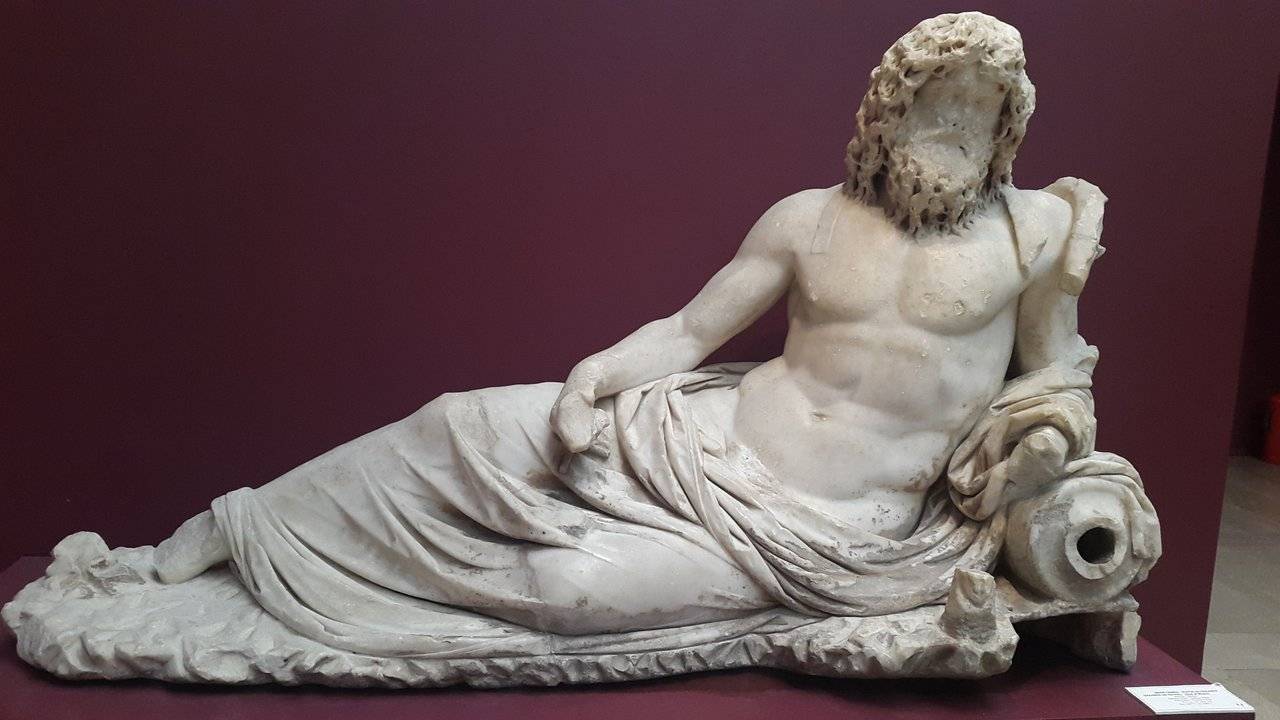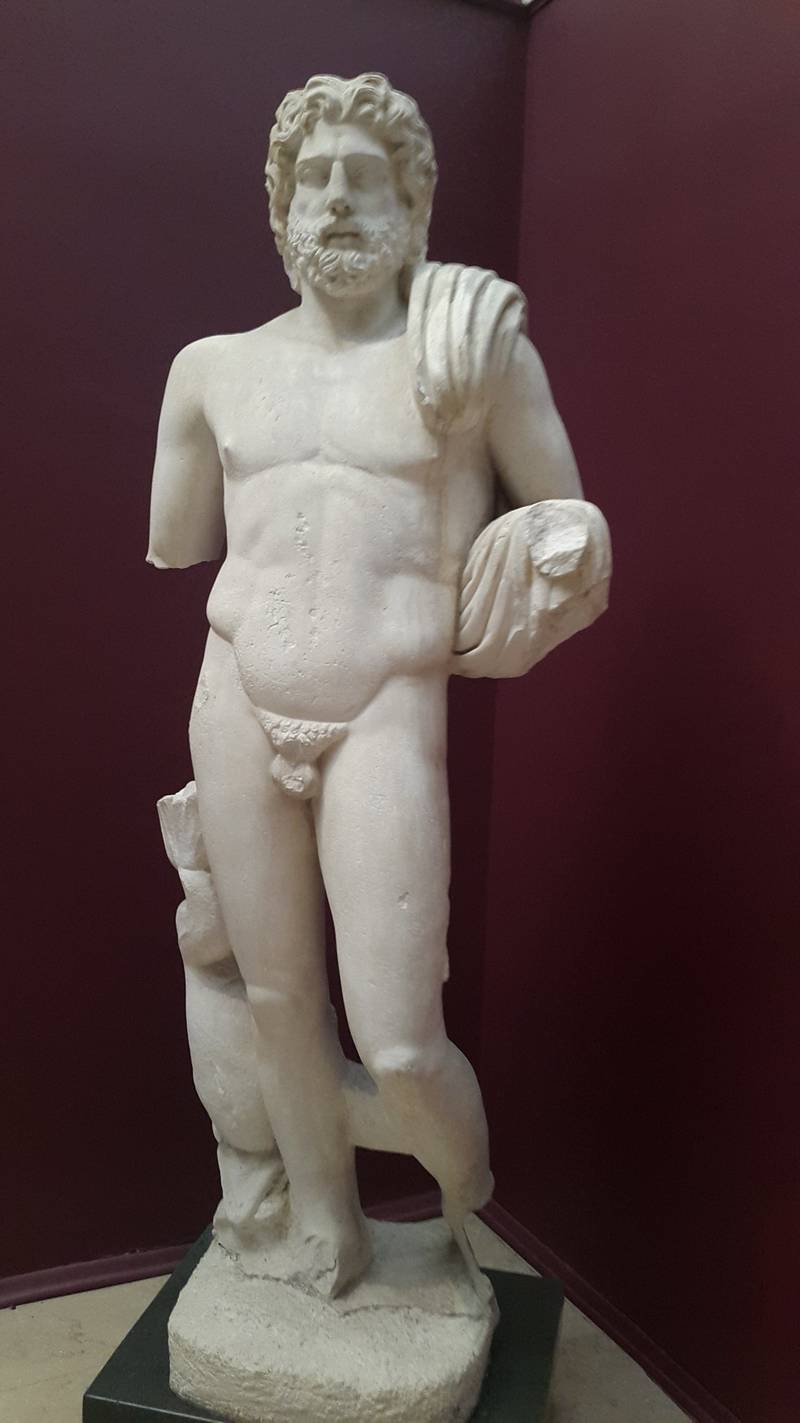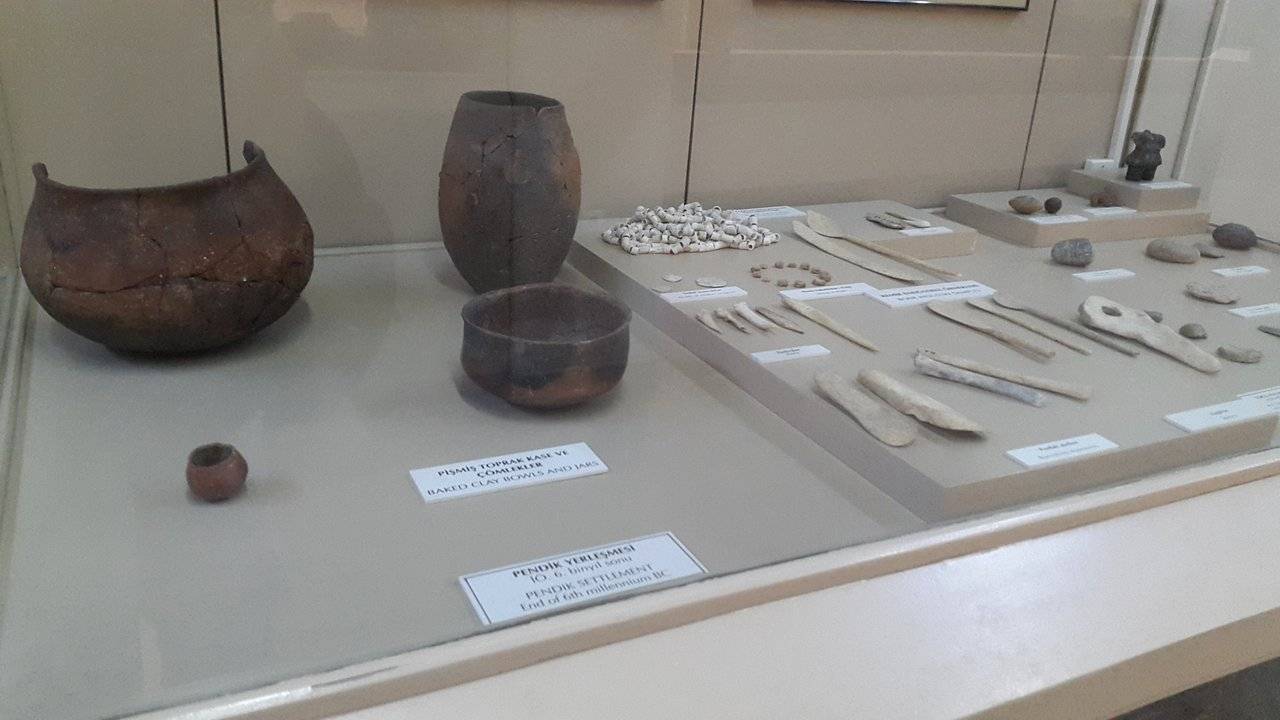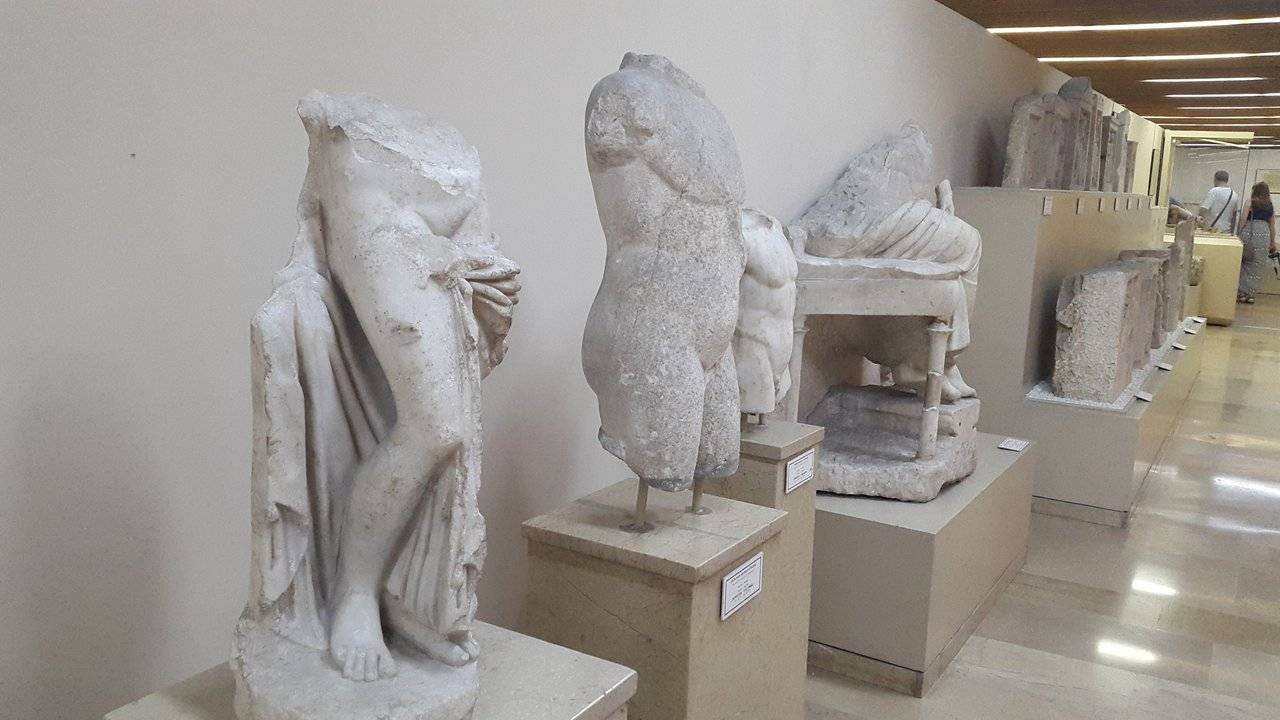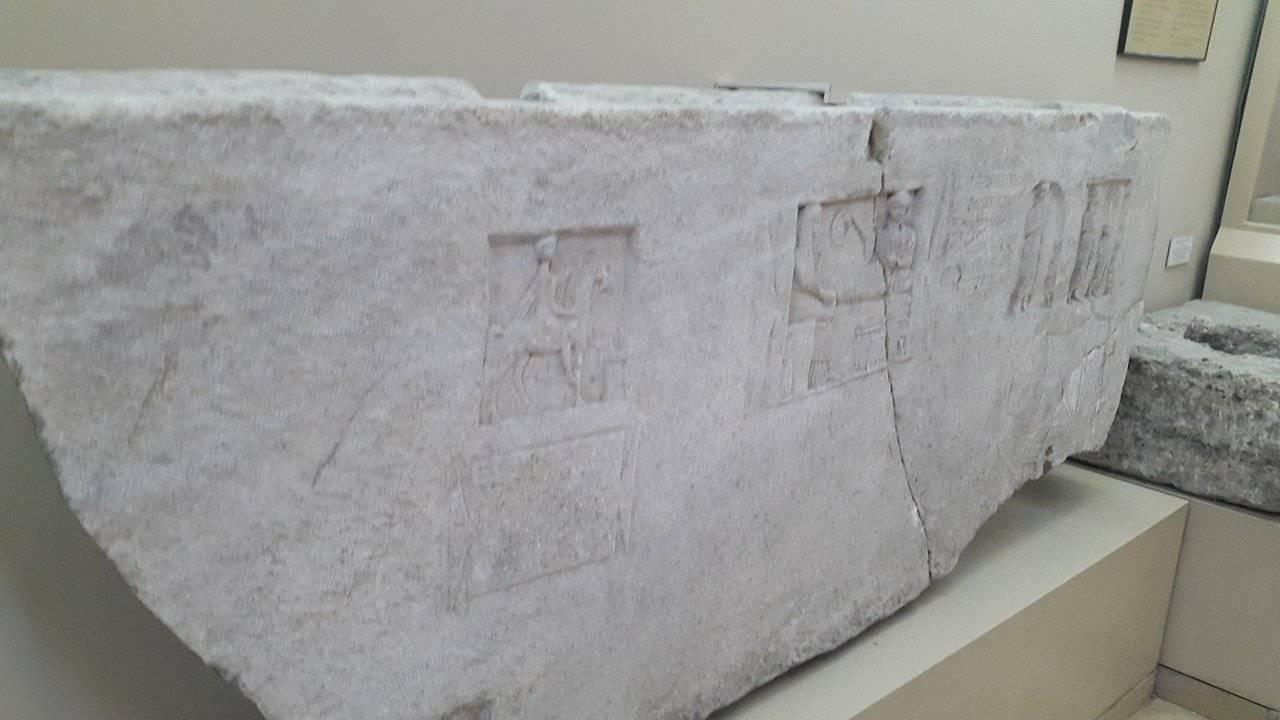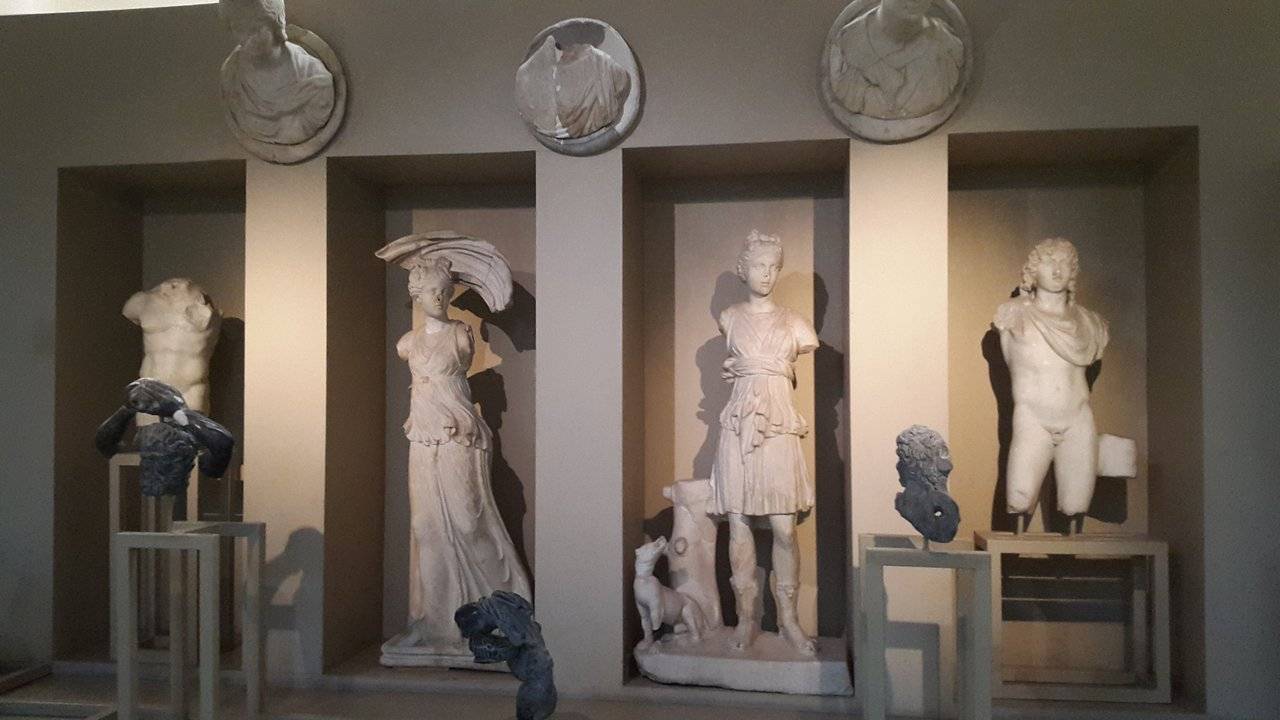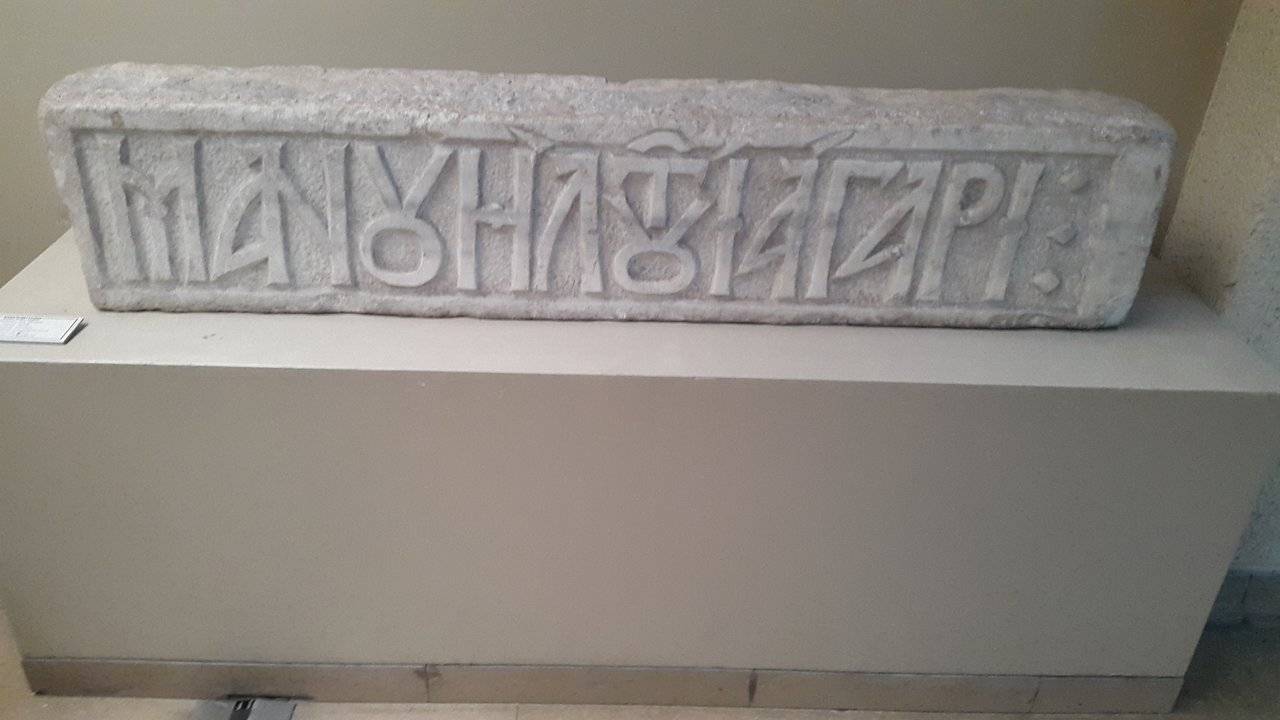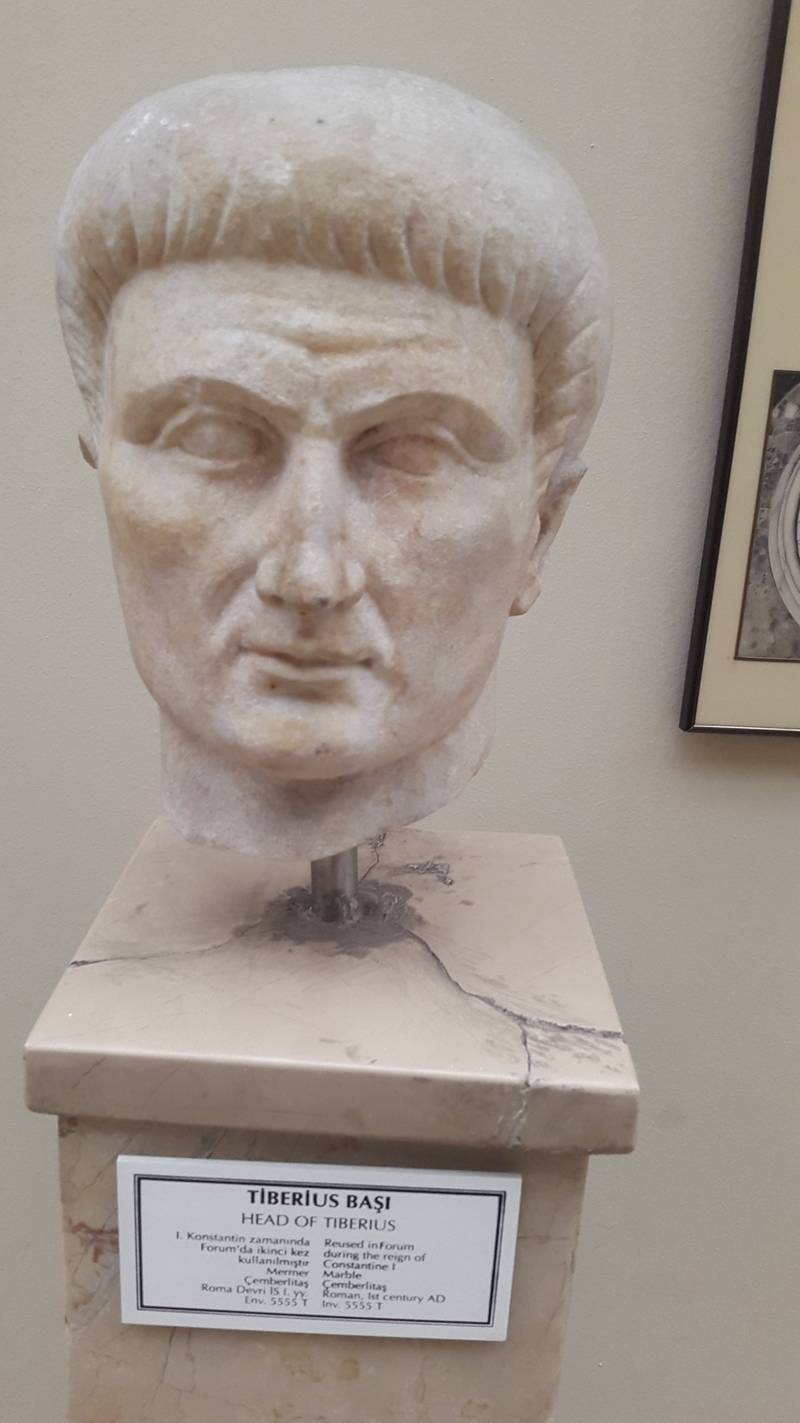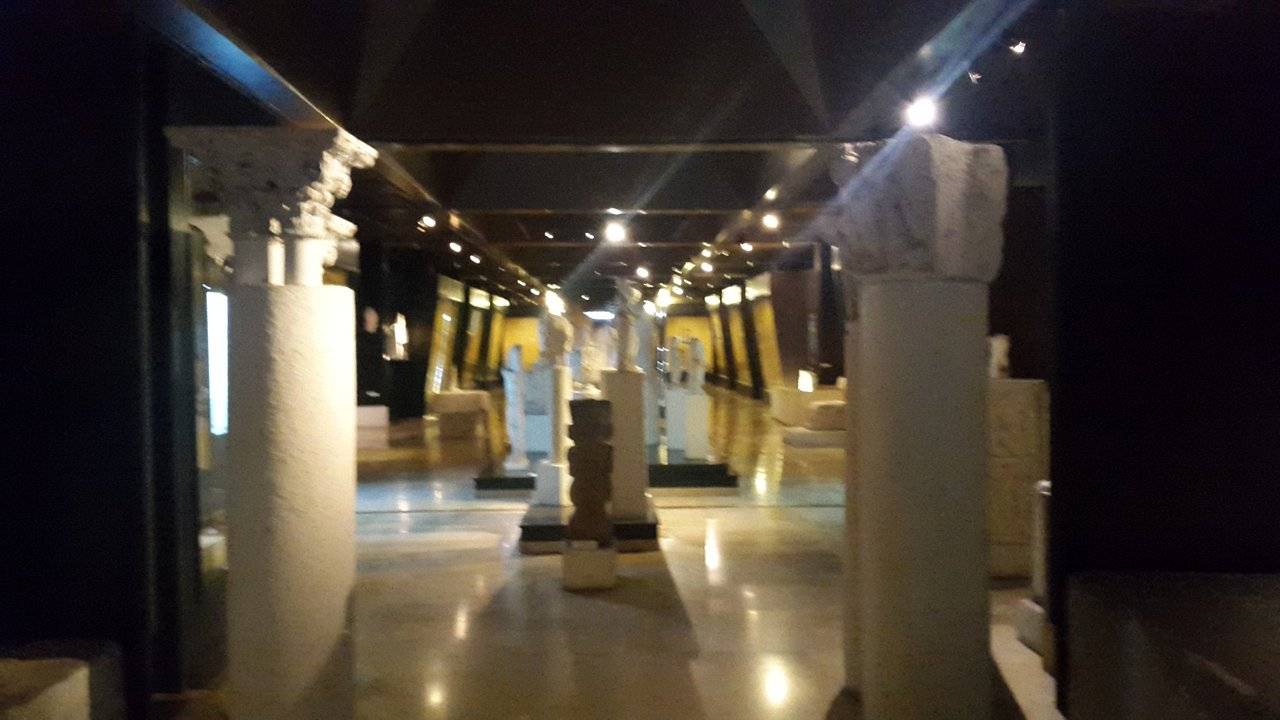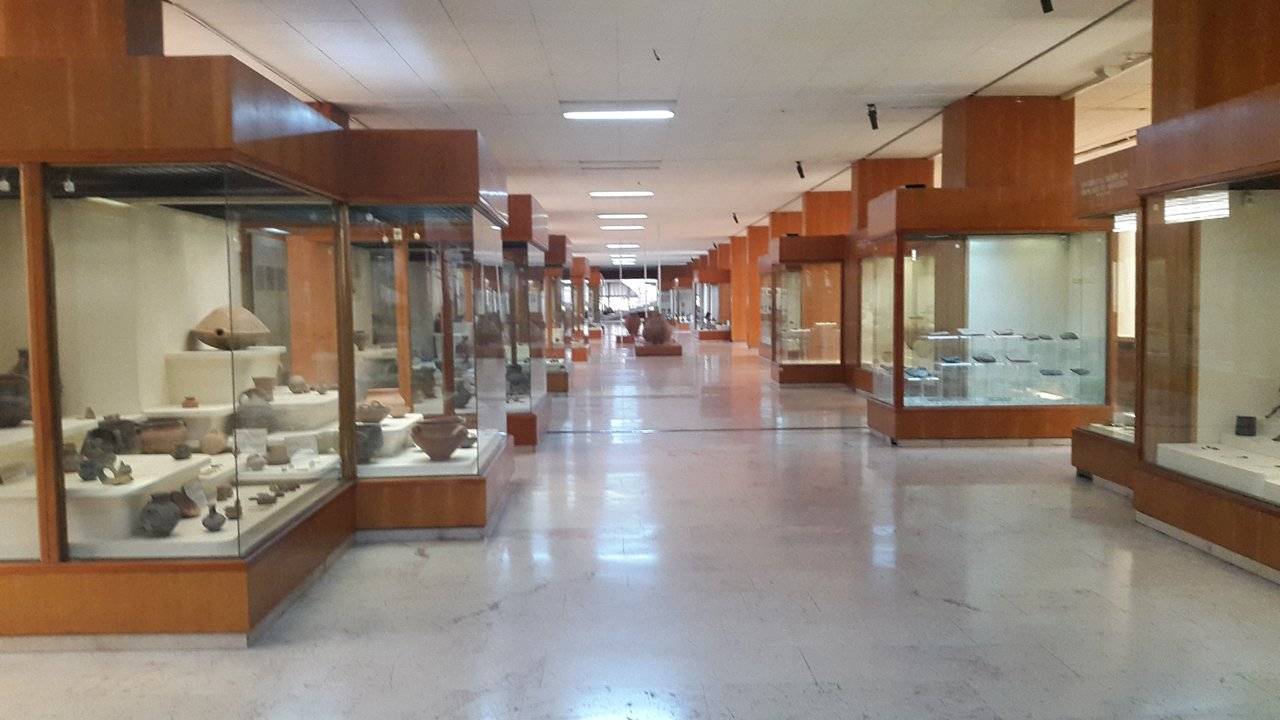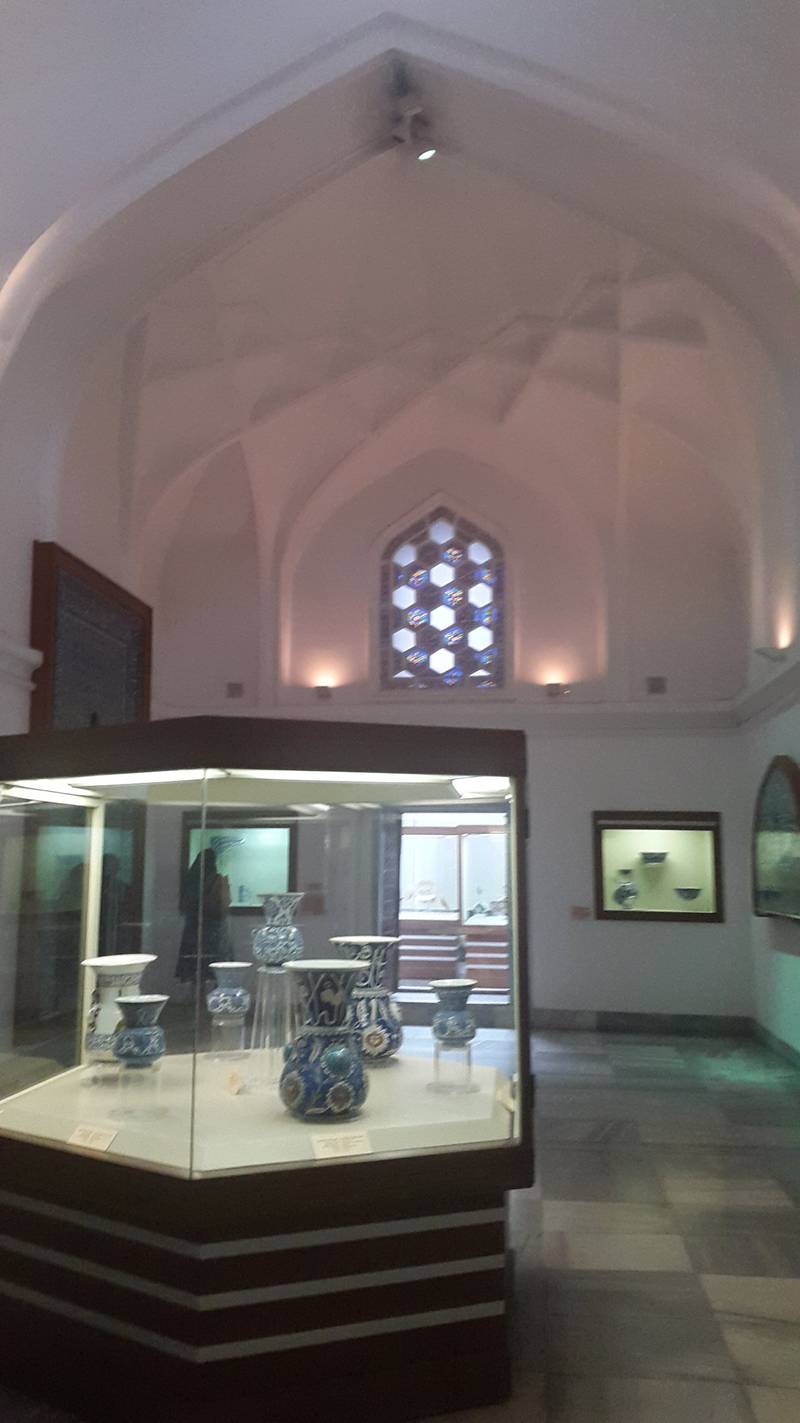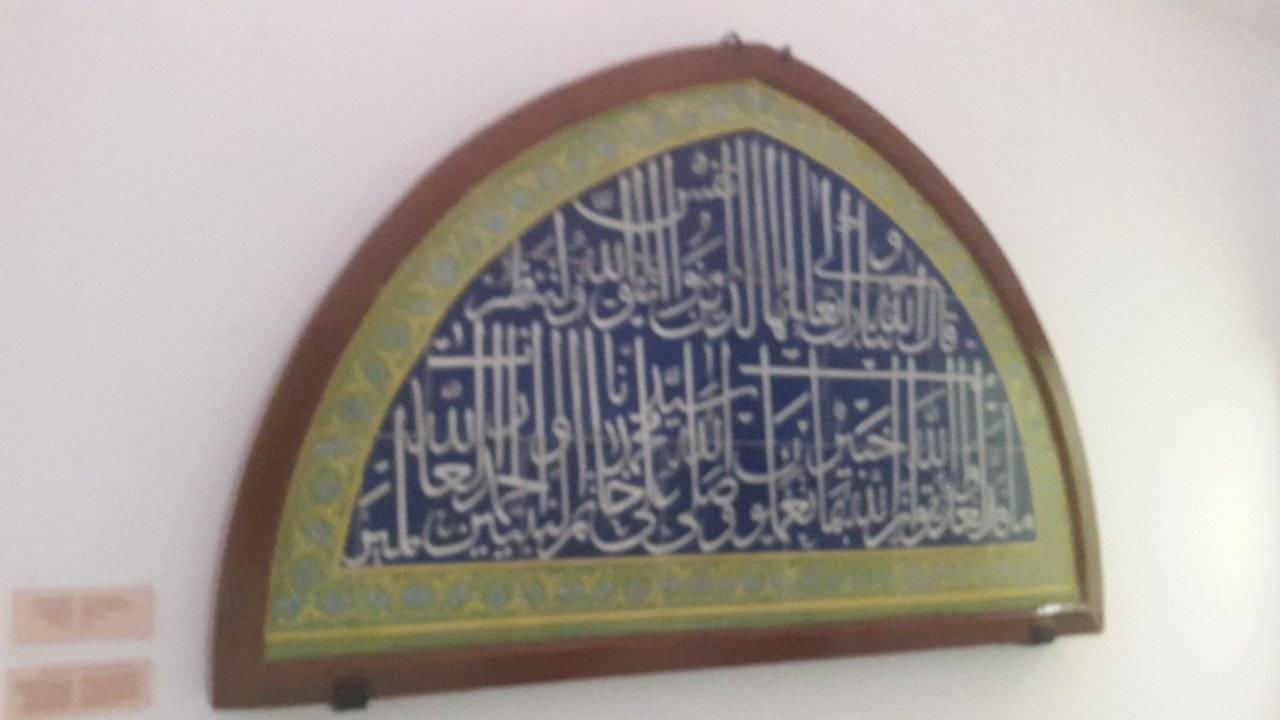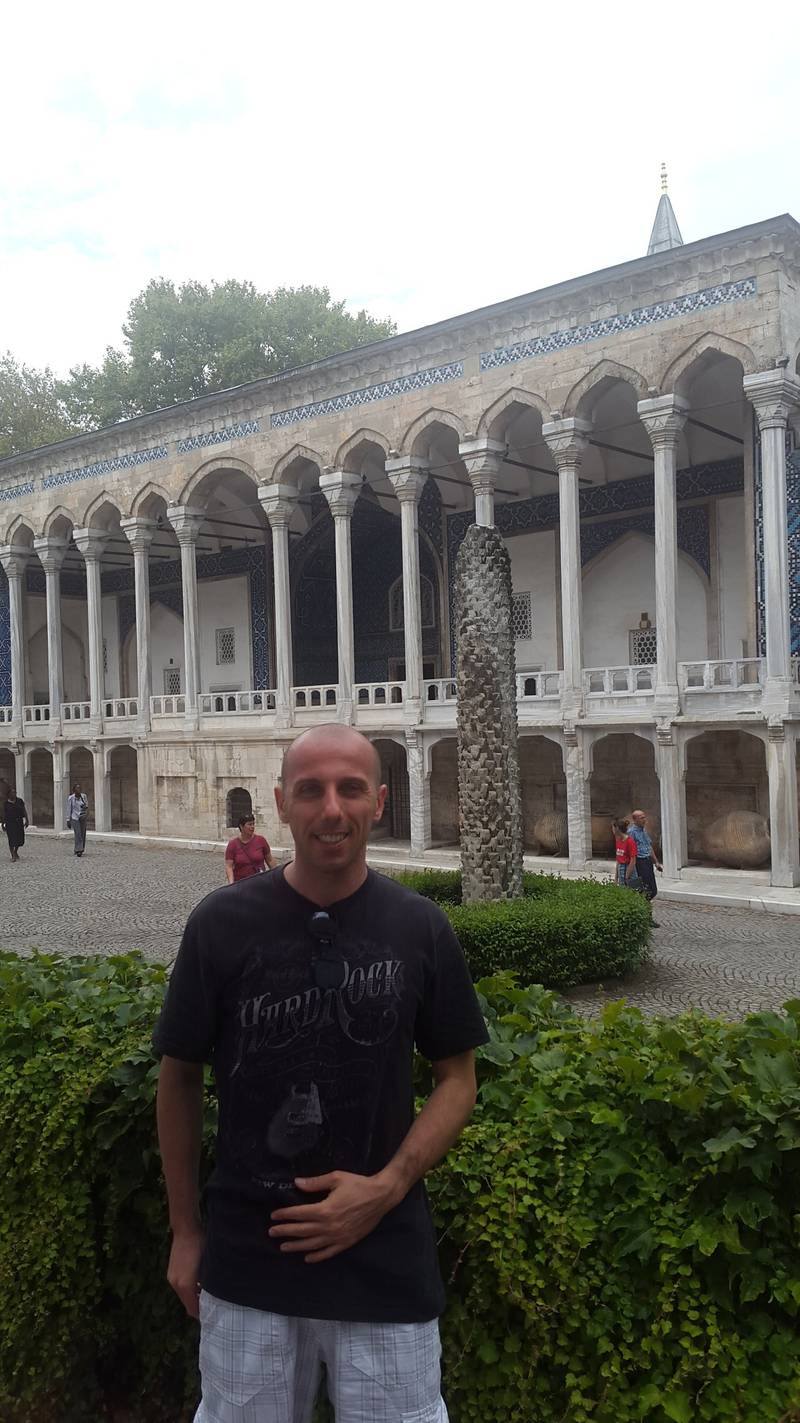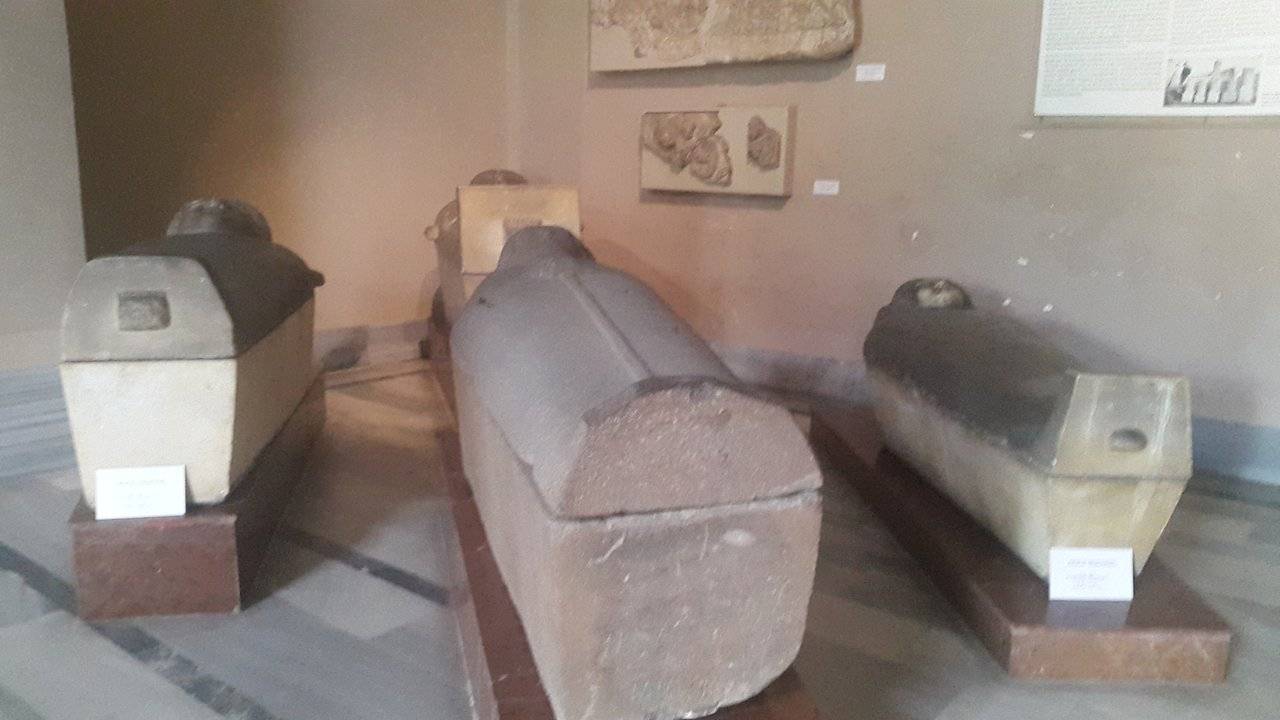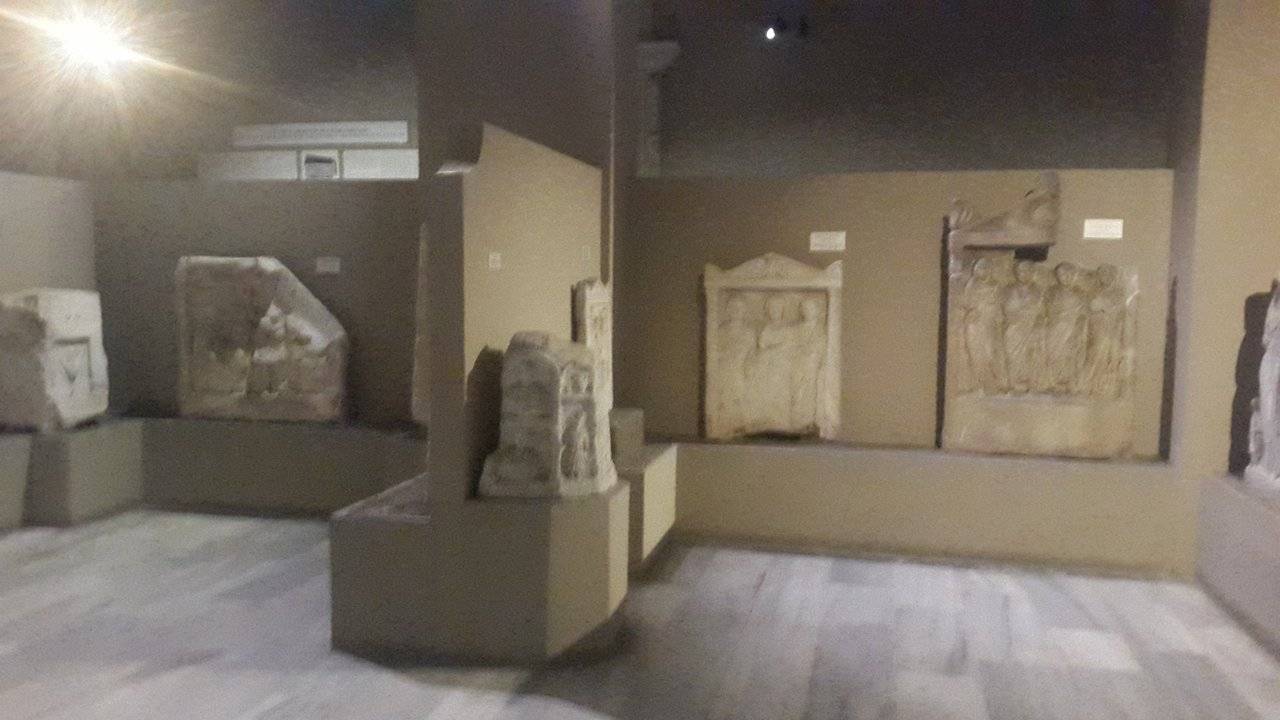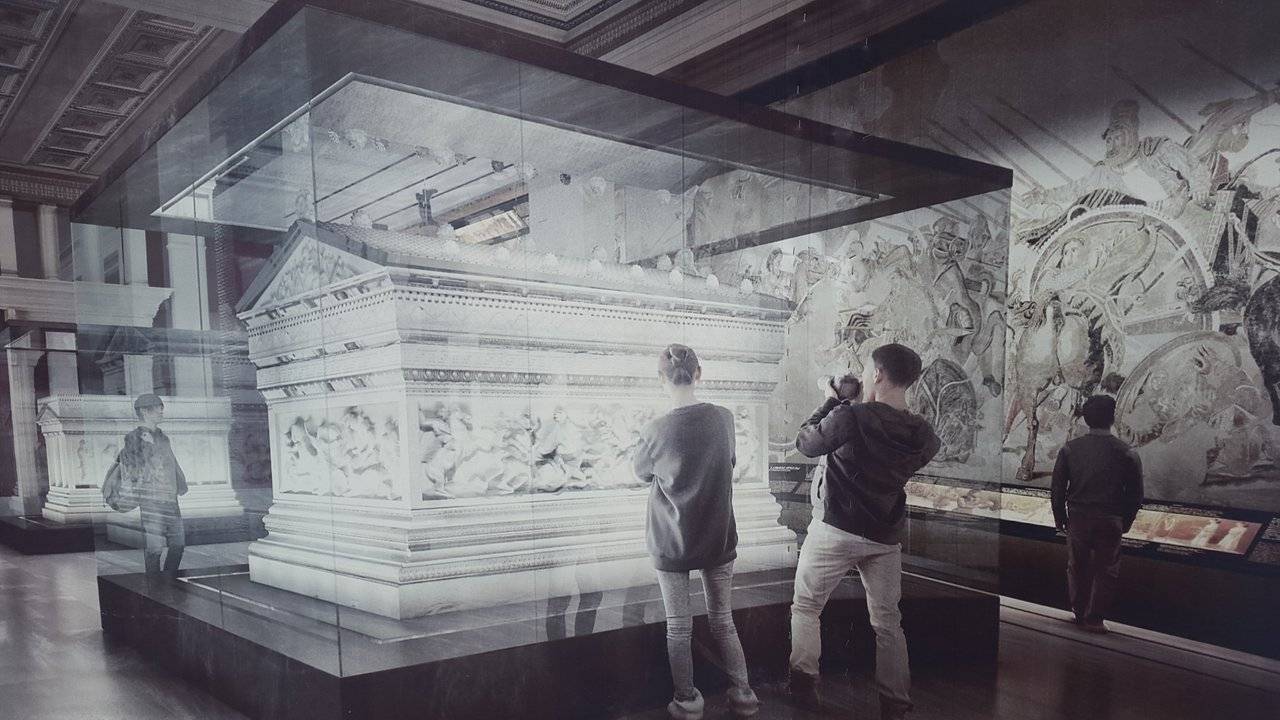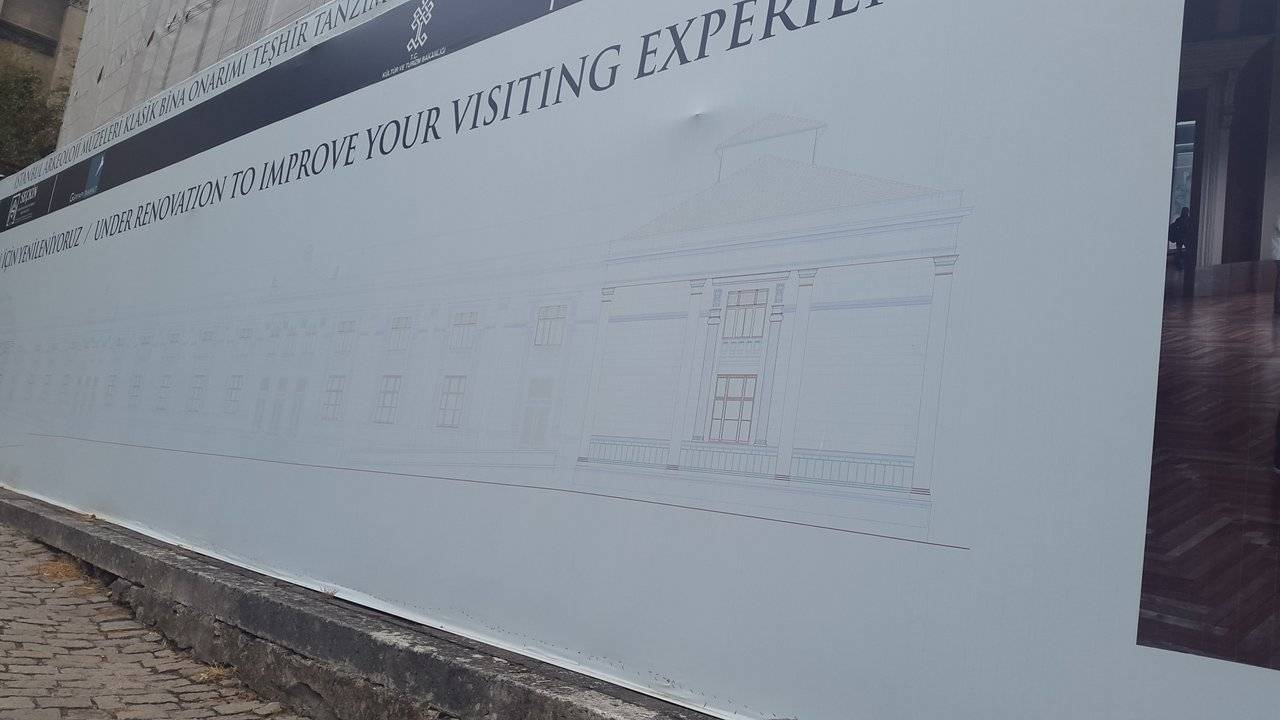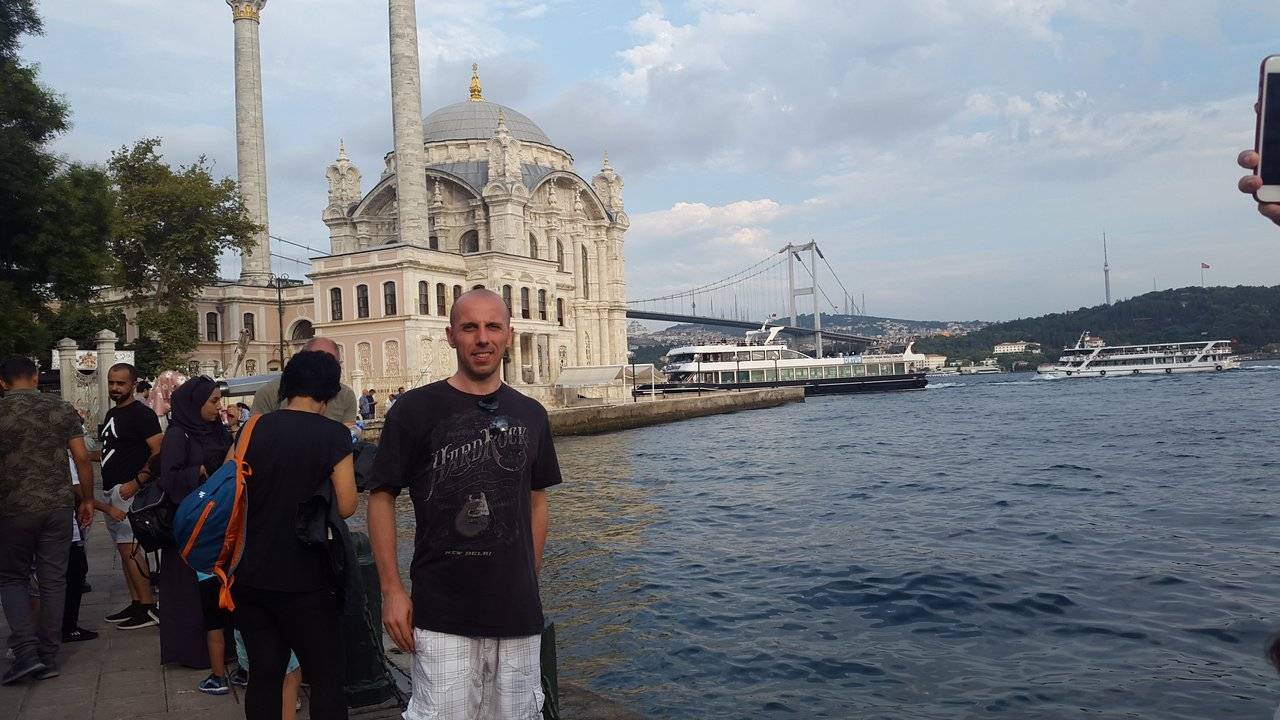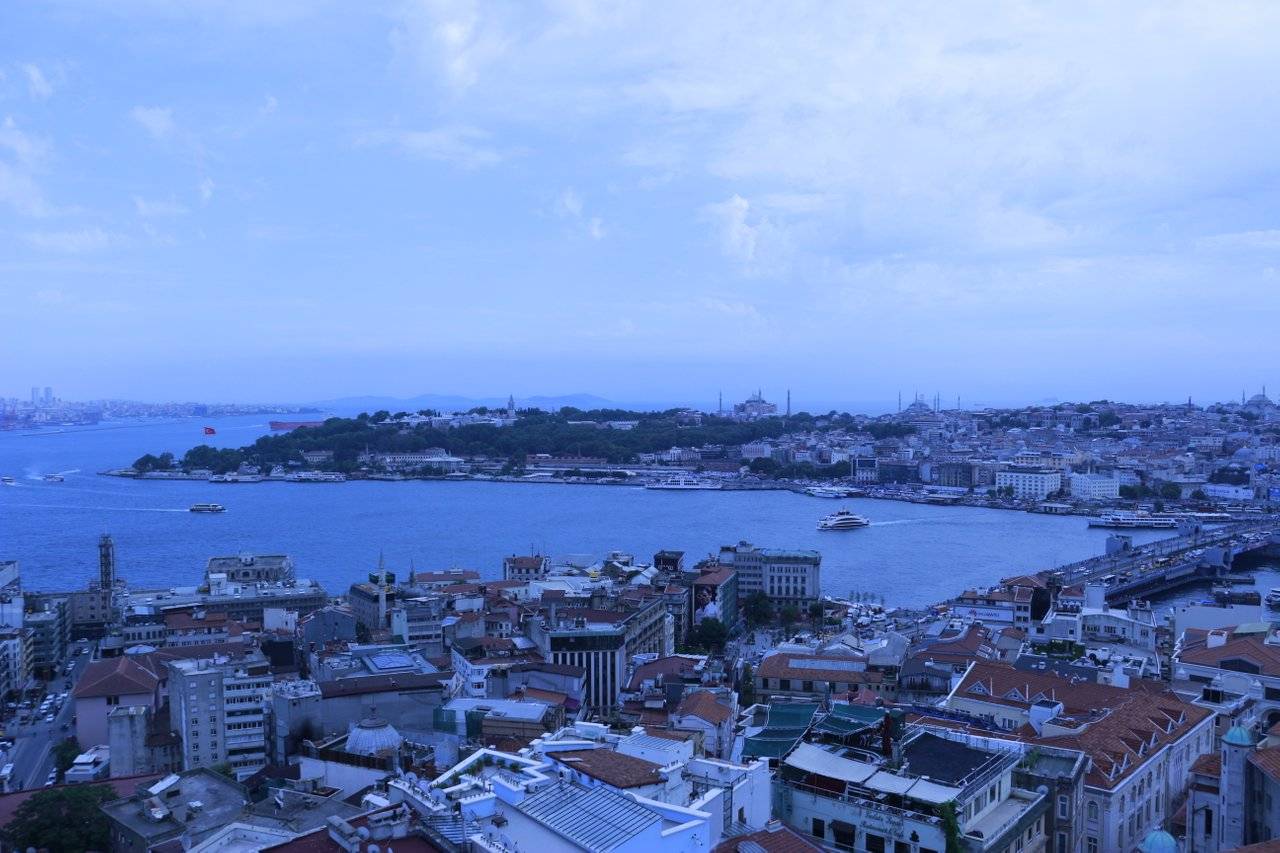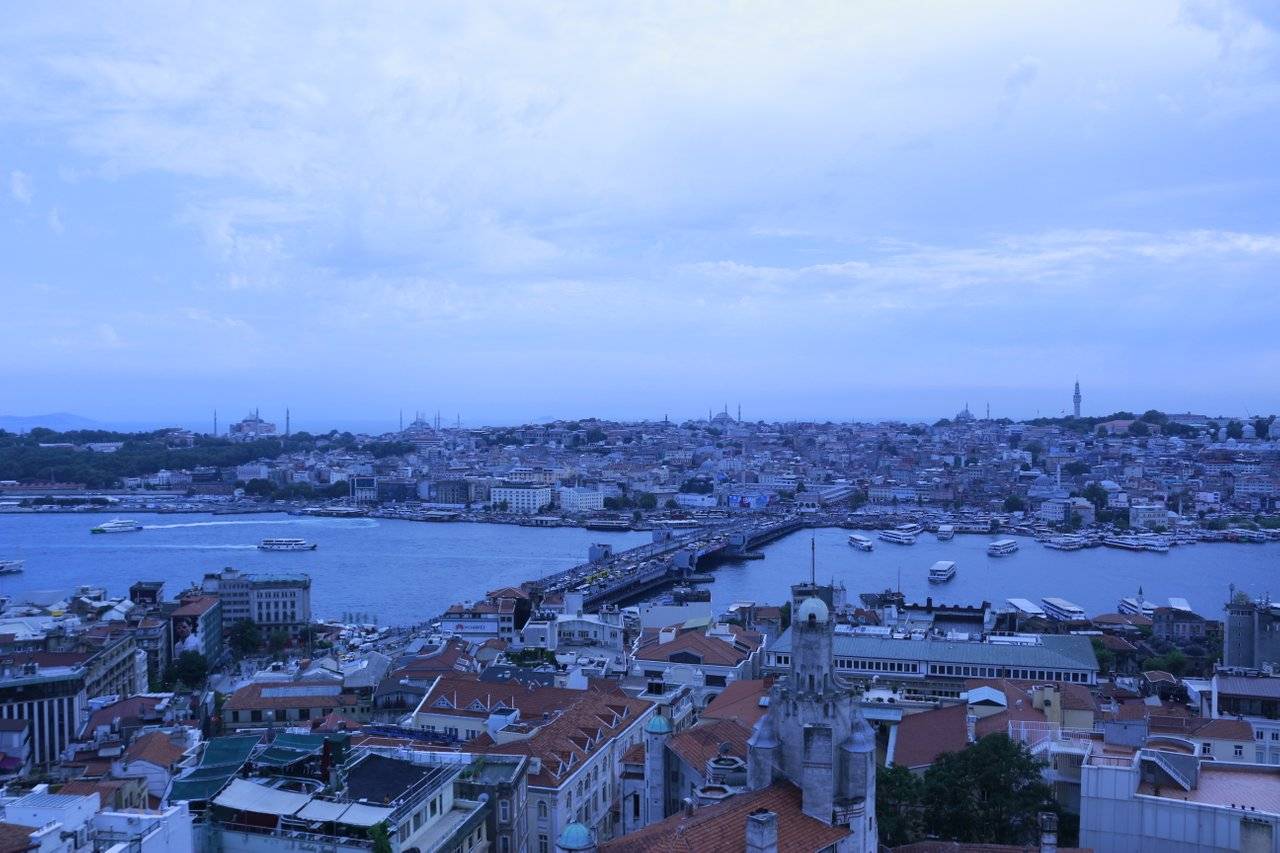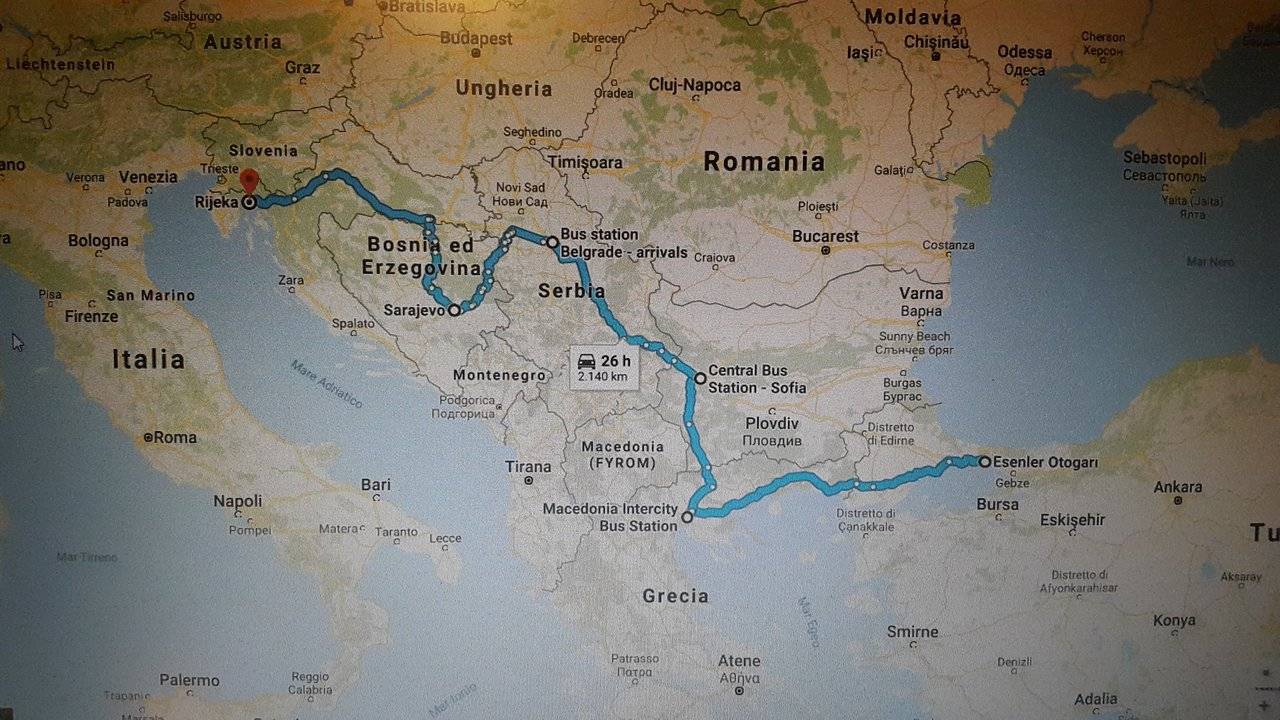Hi, Dear Steemit community
In this post I keep talking about my visit in Istanbul as in my first part. I begin this post with my entrance into the basilica cistern going down through downstairs and mostly dark with artificial light to visit this cultural heritage.
The basilica cistern was built in the 6th century during the Eastern Roman empire of Justinian. Actually it is the largest in the Greater Istanbul: 70 m width and 140m in lenght. The dome is 9800m2 supported by more than 300 columns made by marble divided in 12 rows (each ones of 28 columns) Most of this columns are Ionic and Corinthias style except from a minority not ornamented or in Doric style. The cistern is surrounded by 4 m thick wall of brick and the mortar used is water-proof. Its storage it is estimated around 100,000 tons.
The crying columns it is different to the other ones because it is wet and it was built in memory of the slaves who lost their lives during the construction of the Basilica Cistern.
In the end of the track there are the two Medusa heads supporting two different columns. Actually they are different to others because they edged and grooved. The structure from which the Medusa heads have been to gorgonising whoever look at her. Have those heads was for protecting purposes. Another one was that Medusa loved Perseus the son of Zeus. Athena also loved Perseus and made Medusa jealous.
That is the reason why Athena converted the hair of Medusa into snakes and everybody who looked at here were gorgonised. But they are legend no further evidence were found. No evidence also about the fact that one of these two heads was in an inverted position compared to the other one.
Not far from the basilica cistern is situated the Archeaological museum of the city. A further evidence of the heritage Istanbul can offer to visitors.
From the main entrance it is the first building situated on the left housing object from Anatolia, Egypt, Mesopotamia and Pre-islamic from the Arabian penisula.
In this last one the traces of first humans living between the Red Sea, Indian Ocean and Persian Gulf. Because of the natural features of this area, different cultures evolved throughout it.
From the 4th century B.C- 1st century find in the first rooms some building or plate inscriptions in limestone or marble.
A section of the building is dedicated to ancient Egypt period from 2700 B.C to 395 A.D. Some sarcofagus and small statues dedicates to ancient Egyptian Gods such as Anubis, Horus, Sekhmet etc.
It is told that first trials of mummification took place at that time during the Old Kingdom. A description concerning the mummification is found in a board in one of these rooms. It mentions the dehydration of the body and the process of embalming in different stages untill the body were wrapped with bandages. According to Ancient Egyptian belief, life after death is possible only through the preservation of the body.
The following part is dedicated to Mesopotamia, and part of its heritage housed in this section throug the relief of Ishtar, the monumental gate which divided the outer and the inner wall of Babylon, the capital of the Neo Babylon.
The Lion in relief momumental procession street opened for religious and military purposes. It runs from Ishtar gate to the building where festivities were held. Some columns bases, relief of musicians, portal lion made of basalt,
Following the next rooms I found some objects of the iron, middle and late bronze age found in East Anatolia.
I moved to the next building whose facade was on restoration. Actually following a corridor and find a section of sculpture 7th-6th century B.C. Typical statues of this period were the standing virgins and the standing youth created as votive offerings or as tomb monuments.
A section dedicated to the period fromVI to IV centuries when Anatolia was under Persians in which were exhbit the named Ionian-Persian style, Attic sculptures and funerary steeles.
Then the Hellenism period from IV century to I century began when Alexander who defeated the Persian. A statue in marble of Lysippus representative of his head is found here. It is told that Alexander became famous not only because of he was an experienced soldier who obtain control of a large territory but also because of its respect for people met during its campaigns. Its will seemed to be create combination of the different cultural aspects between west and east.
The following part is dedicated to Roman period from the late 1st century during the arrival of the Roman Emperor Augustus to the IV century A.D. A bust of Augustus, a statue of Oceanus (Ancient Greek god of Rivers and one of Artemis (Goddess of moon) e Poseidon (god of sea)in marble are found here.
In the second floor of this building there is a section dedicated to Istanbul through the ages. The first part is the dedicated to prehistory in the city from the Paleolithic to the Iron Age, the first settlement.
The second is about the topography during the Greek Period, the founding of the city of Byzantium, Greek and Roman period. Mostly statues, frontface of sarcofagus, gravestones, funerary steleas.
Istanbul during the Byzantine period and its landwall inscriptions, forum of Augustus, a description concerning the church of St.Irene (Hagia Eirene), and hypodrome constructed by Septimus Severius.
A part of this section dedicate to the structure within the Topkaki palace, busts in marble during Roman period.
In the upper floors a section dedicated to the object during the Neolithic, Bronze, Middle, Iron Age in Istanbul Syria, Cyprus and Palestine. plus the different settlements in Troy.
In the middle of courtyard one of the shipwrecks discovered in Theodosian harbour by Istanbul Archeological museums.
In the left side the tiled kiosk,the only palace in Ottoman style situated in the city where outstanding samples of Turkish tiles and ceramics are exhibited. It was built in the XV century by Sultan Mehmed the conqueror. Due to the tiles which adorn the interior and the exterior of the palace it is called also Crystal Palace, attractive the combination of colours and its sense of decoration.
The last part there is a sections housing mostly sarcofagus and tomb,steleas with symposium scenes,gladiators games, door shaped grave stelaes and other examples Anatolian architecture and mosaics.
But what I really missed....... I show the photos of the board which announce that part of the museum is under renovation so I have seen the sarcophagus of Alexander only in this way.
What a pity. As I was always saying: another reason to come back again to this unique city.
Moved to the north from Sultanhamet area to Besiktas and visit inside Ortakoy mosque walking around the shops and restaurant closeby.
(Behind the mosque one of the bridges linking European and Asian part of Istanbul)
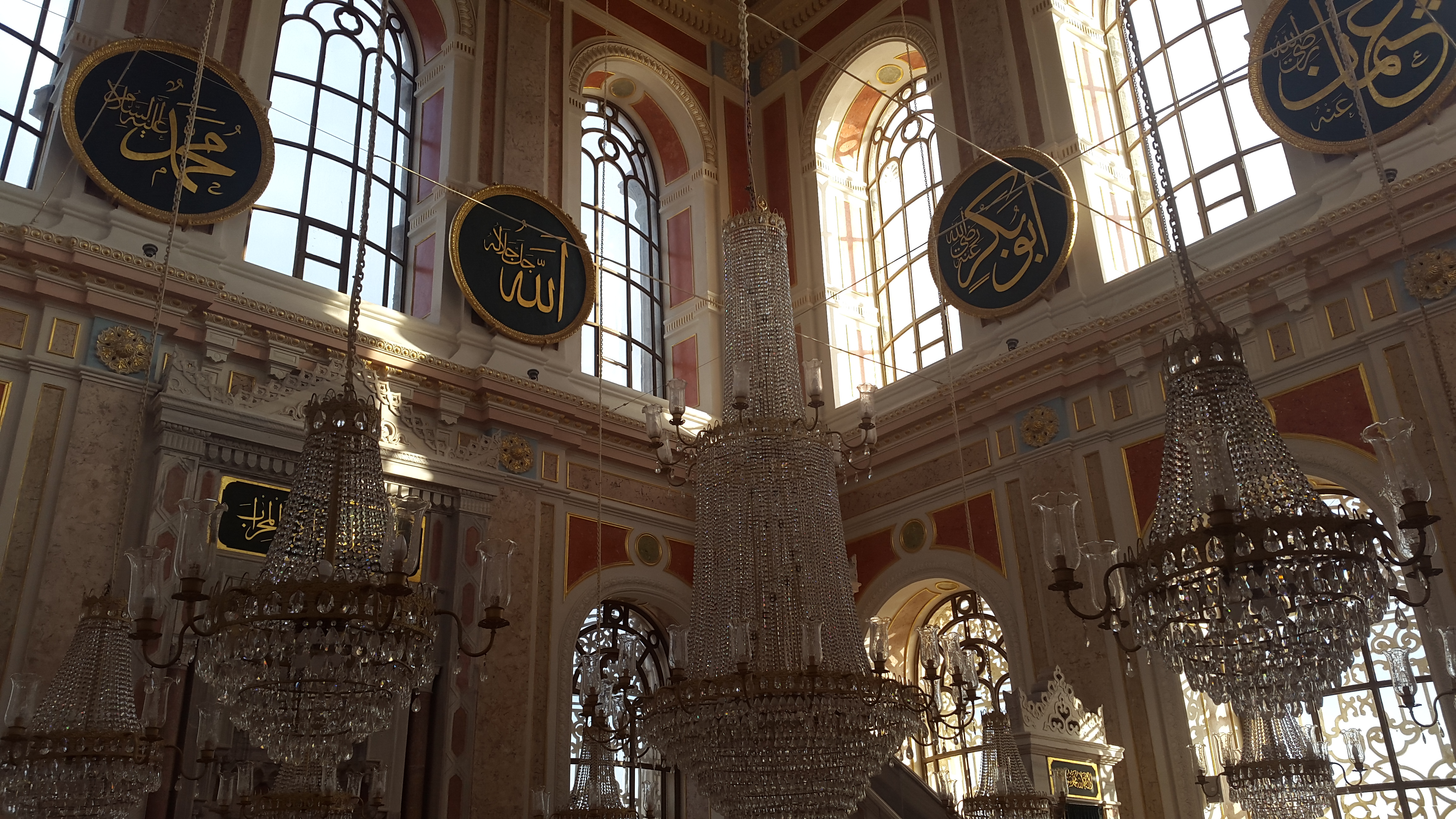
Ready to Blog & Earn?
With TravelFeed, easily start your own travel blog and earn as you go. It's the smart platform for travelers who want to profit from their passion. Create a free account
I caught the bus and came back to Beyoglu area to conclude the post I show my visiting Galata Tower the view of some part of Istanbul
In the next posts I will keep talking about my stay in Istanbul and my next stops around the Balkans as in this map below
Don't Forget: Get Travel Health Insurance!
To make your trip a worry-free experience, TravelFeed recommends SafetyWing Nomad Insurance. It provides comprehensive health coverage while you travel, so you can focus on exploring, not the unexpected. Get a quote here
Thanks for your attention
Best Regards
(All photos are my own property and taken with Canon 700d and my mobile phone)
Travel Resources for your trip to Turkey
Recommended by TravelFeed
Flights: We recommend checking Kiwi.com to find the best and cheapest flights to Turkey.
Accomodation: Explore the best places to stay in Turkey on Booking.com, Agoda and Hostelworld.
Travel Insurance: Medical emergencies abroad can be pricey, but travel health insurance is not. We always use SafetyWing for affordable and reliable coverage.
Car Rental: For hassle-free car hiring, DiscoverCars is our trusted choice with a wide selection of vehicles.
Internet: Got an eSIM compatible phone? Airalo is perfect for reliable internet access during your trip. Just install it before you go, and you're set!
Day Trips & Tours: We recommend GetYourGuide for a variety of well-organized and enjoyable activities.
Travel Planner: Need a hand planning? Our free travel planner chatbot is your personal guide to Turkey. Chat now.
Disclosure: Posts on TravelFeed may contain affiliate links. See affiliate disclosure.
